

Reading List
Latest videos.
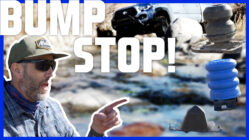
Choosing the right bump stop for overlanding
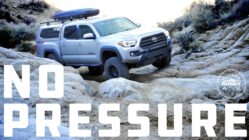
Everything You Need To Know About Airing Down for Casual Overlanders

Mono Tufa and Chidago Canyon: Vanlife Adventure Part 3
Biggest legends of the west in one photograph: fake or real.

Ran across this image of some of the most amazing legends of the west taken together in 1883 at Hunters Hot Springs in Montana.
- Wyatt Earp 1848 – 1929 : Lawman involved in the famous gunfight at the OK Corral in 1881.
- Morgan Earp 1851 – 1882 : Brother of Wyatt and also a lawman. Was with Wyatt at the OK Corral. Though he survived that incident and an amubush in 1882, he was shot while playing billiards on March 18th 1882.
- Doc Holliday 1851 – 1887 : While not a law man, Holiday was a friend of Wyatt Earp and assisted him at the OK Corral. Holiday was a gambler, gunfighter and dentist. Despite his reckless ways, he died of tuberculosis in bed with his boots off in Glenwood Springs Colorado.
- Teddy Rosevelt Unknown: While Teddy Roosevelt (1858 – 1919) was alive in 1883 and president of the US from 1901 – 1909, he was a New York State Assemblyman, historian and writer at the time of this photo. He didn’t leave for his adventures in the Dakotas until the death of his mother and wife in 1884. But Teddy Rosevelt is in this photo and I can’t find anything on him.
- Liver Eating Johnson 1824 – 1900 : A naval man turned gold miner turned woodhawk, Johnson was about the right age in 1883 to have a big white beard, but he was, “ described as a large man, standing around six feet tall and weighing over two hundred pounds.” So this doesn’t appear to be him.
- Butch Cassidy 1866 – ??? : Robert LeRoy Parker would have been just 17 in this photo. Which is vaguely plausible. Though he later became a notorious outlaw, that wasn’t until after about 1889 when he assisted in robbing the San Miguel Bank in Telluride, CO.
- Sundance Kid 1867 – ??? : Harry Alonzo Longbaugh was only 16 in 1883 an not known to have met Butch Cassidy until after Cassidy was released from prison in 1896.
- Bat Masterson 1853 – 1921 : Buffalo Hunter, U.S. Marshall and Army Scout, Masterson served with Wyatt Earp in Kansas. Masterson was in Dodge City, Kansas during 1883 for the Dodge City War , so it is unlikely he was in Montana for this photograph.
- Harry Britton: Unknown. He very well could have been there.
- Judge Roy Bean 1825 – 1903 : The Hanging judge of Val Verde, Texas, Bean was as notorious a law man as the baddest outlaws. While he was a judge in Texas in 1883, it’s possible he could have made a quick trip to Montana.
- Ben Greenough: Unknown
I say this photo is a fake, to more specifically, that the hand written caption is fake. I still might buy a print though.
Source: OLD WEST 1883 Gathering Wyatt Earp Butch Cassidy POSTER | eBay .
10 comments
Cancel reply.
Your email address will not be published. Required fields are marked *
Your research certainly debunks the authenticity of this photo as a representation of most of the named individuals, so it’s curious to me why you would consider buying the print.
I’ve seen it before–but never thought it could be fake. I’m skeptical of everything on the Internet, but I believe everything that existed before that…
That pic was taken a year after I died!
According to my extensive 3 minute research, Teddy was 5’10” and Butch was 5’9″ so unless there is something wrong with the quality of the picture “Teddy” would be about 6’4″ (and “#1″ would be about 4’8” and weigh about 98 lbs).
Yes Morgan died in 1882 but you have to figure that the Walmart photomarts were kind of slow with processing back then. Plus this proves that Doc Holiday did enjoy wearing Doc Martens.
Wyatt Berry Stapp Earp Morgan Seth Earp Theodore “Teddy” Roosevelt, Jr. John Henry “Doc” Holliday John “Liver-Eating” Johnson Robert Leroy “Geo.” (George) Parker “Butch Cassidy” Harry Alfonzo Longabaugh “The Sundance Kid” William Barclay “Bat” Masterson Phantley Roy “Roy” Bean, Jr., the Judge
First of all, being a western historical buff, I am preoccupied with anything of “western” nature. That includes any photos of historical value. Secondly, no reputable LAWMAN would be in a gathering with OUTLAWS back in the day, much less take a picture with them. Most outlaws were in jail or deceased at this time (1883) .. By nature, the only group photos were such at conventions, etc by LAWMEN ASSO’s.. I hardly doubt they would “invite” someone WANTED at the time to their meetings..
Details on the bogus names under the photo, here, https://mywebvault.wordpress.com/2010/12/26/livingston-montana-history-hunters-hot-spring/
For the scoop on Hunter’s Hot Springs and this photo, check out the video athttps://youtu.be/1w4IQVN9BaE
- I own an 1883 photo taken in Hunter’s Hot Springs, Montana, that supposedly shows Wyatt and Morgan Earp, Teddy Roosevelt, Butch Cassidy, Judge Roy Bean and other notables. Is it legit?
by Marshall Trimble | May 1, 2007 | Inside History
Scott Young
Florence, Kentucky
Yep, I used to have that photograph in my files, but I traded it to a guy for an authentic photo of Thomas Jefferson, Robert E. Lee, Britney Spears and Elvis at a celebrity fund-raiser in Broken Pelvis, Montana, back in 1949.
Seriously, here’s what Wild Bunch expert and author Dan Buck says about it: “The Hunter’s Hot Springs group portrait has been knocking around for some years. It’s as authentic as the jackalope and as verifiable as the legend of the vanishing hitchhiker. I do not know of any serious Western historian who gives credence to the roster of Old West celebrities scrawled on the photo.
“It is worth noting that in 1883, Butch Cassidy and the Sundance Kid were teenagers, not the adults in the photo. Morgan Earp, who is supposedly in the picture, had been murdered in 1882.”
Supposedly the guys depicted in the photo were local residents—some of whom bore a slight resemblance to the men.
Related Articles
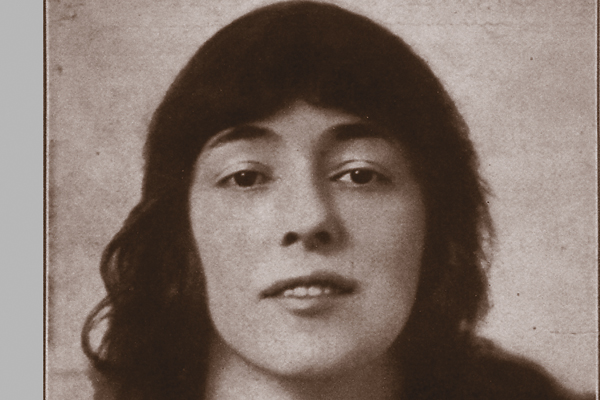
A former artist’s model turned “Florodora Girl,” Evelyn Nesbit married Philadelphia society scion Harry K.…
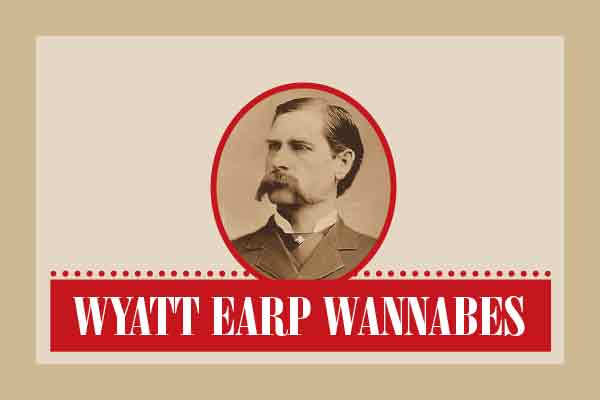
More than 40 actors have portrayed Wyatt Earp, but few have even slightly resembled him.…
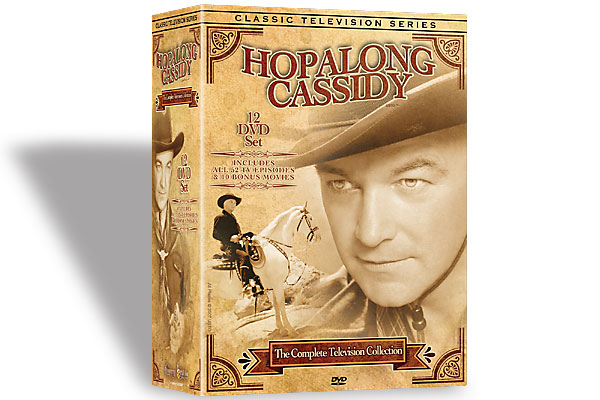
As Tommy Lee Jones mentions, Hopalong Cassidy meant a lot to kids of that generation.…
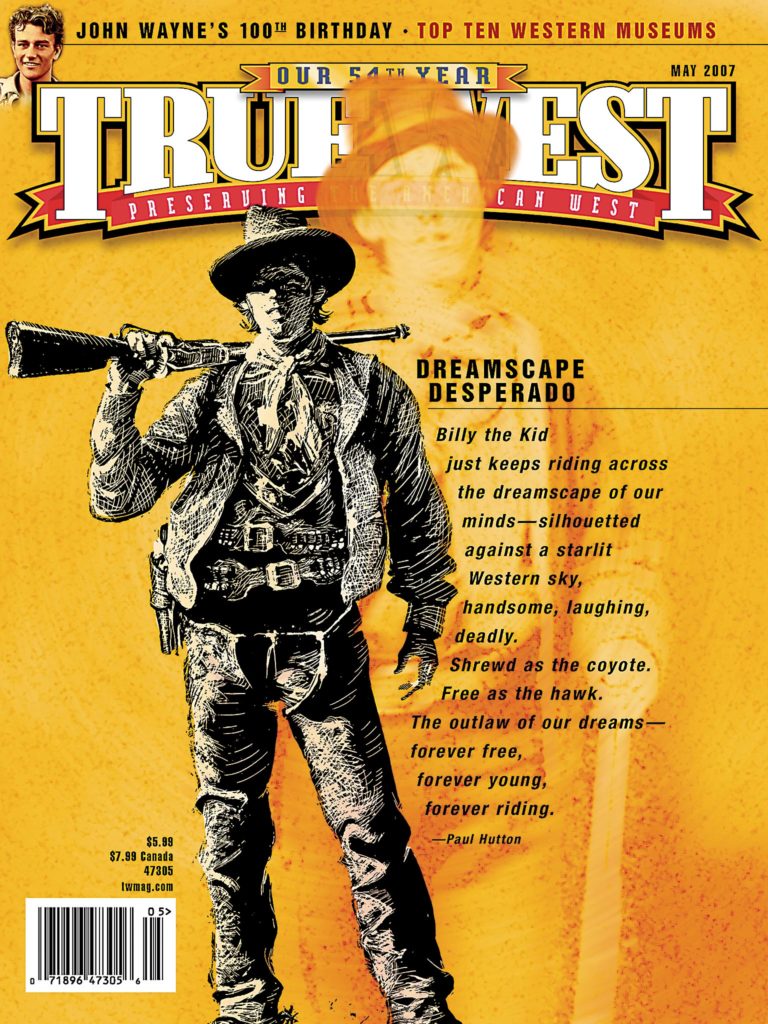
In This Issue:
- The Many Faces of Billy the Kid
- A Case for Murder
- Queen of Country Swing’s Tough Mamas
- Birth of a State
- Dreamscape Desperado
- A Tale of Two Governors…
Western Books & Movies
- Tough Towns
- The Great Mormon Cricket Fly-Fishing Festival
- Spanakopita Western
- The Big Valley Season Two, Vol. 1
- Wild Indigo
- The Canyon of Bones
- A Fate Worse Than Death
- Arizona Sheriffs
- John B. Armstrong: Texas Ranger and Pioneer Ranchman
- Yellowstone Denied
- Rio Bravo/ The Cowboys
- Boomtown Saloons
- Hard and Noble Lives
- Broken Trail Spin-Offs
- Moses Taite’s War
- An Endless Attraction to Billy
- From Hondo to Big Ike
- On Location!
- The California Gold Rush and the Coming of the Civil War
- Vengeance Moon
- Texas Showdown
- Under the Sunset Rim
- Sunset Trail
- Give Me Mountains For My Horses
- Spreading the Word
- The Reel, not Real, Jesse James in Film
- BALLOTS AND BULLETS: The Bloody County Seat Wars of Kansas
- Lone Star Lawman
- Amarillo: The Story of a Western Town
- Following the Royal Road
- Great Train Robberies of the Old West
More In This Issue
- The Tale of the Empty Chamber
- Stories Behind the Song
- On the Trail of John Wayne
- Honoring Mothers and Fathers
- Weapons as Art
- Preservation: Splish Splash Bath
- Not a Leg to Stand On
- Collecting the West Roundup
- Rendezvous Deja Vu
- Deadwood, SD
- Harry Young, a bartender at the #10 Saloon in Deadwood, was present when Wild Bill Hickok was killed. In a 1915 book, Young claimed that Hickok lost his last hand to William Massie, Kings full to four 7s. So what is the source of the Dead Man’s Hand of Ac
- What can you tell us about the movie lot called Cudia City in Phoenix, Arizona? The TV series 26 Men was shot there.
- In El Paso on August 19, 1895, did John Selman shoot Hardin in the back of the head, as many believe, or did he shoot him in the face, as Selman swore?
- Where can I find a definitive biography on Jim Miller?
- Sacking Lawrence
- Top 10 Western Museums of 2007
- What insurance companies cover Old West re-enactment groups?
- Tracking the Great Bear
- One Man With Courage Makes A Majority
- No Compromise with War
- Ugly Ducklings of Frontier Six-shooters
- Preservation: Roll Along, Wagon Train
- A Gun Exchanged for Billy the Kid’s Mare
- A Man That Won’t Bend
- St. Joseph, MO
- Trailing the First Indian Person
- ATM Update: Hunnewell, KS
- What can you tell me about Cimarron, New Mexico?
- If John Wayne was granted deferment from military service during WWII because he had a large family, wouldn’t this make him a draft dodger?
- What can you tell me about hat cords in the frontier military?
- What pistol did Wild Bill Hickok favor?
Subscribe to the True West Newsletter
kirschner.org
The official website of Ann Kirschner
- Follow Ann on Twitter
- Contact Ann
- The Digital Reader
- Lady at the OK Corral
- Reviews of Sala’s Gift
- Macaulay News
Summer camp with Earps, 1883 in Hunter’s Hot Springs…or is it?
Look familiar? I found this at the BBC, but I don’t know the source.
I liked Kevin Connolly’s take on the photo, though he does not identify its provenance. I’ll be looking on the Earpian listservs to see who first verifies or debunks the cast of characters. Virgil Earp, for instance? Unlikely. Of course, not a woman to be found on that veranda. Really, put a long coat and hat and mustache on most men, add a vintage black and white print, and they do look alike.

Get out the magnifying glasses
Connolly writes:
If it is real, it is extraordinary: a moment when the myths and legends of the Old West crystallised for a moment into a single group photograph before evaporating again into the anonymity of the hot afternoon.
The 15 men in the picture are arranged along the wooden veranda of a hotel in the resort of Hunter’s Hot Springs in the summer of 1883.
In the fashion of the time, no concessions are made to the brutal heat. Waistcoats are worn, ties are neatly knotted, bowler hats are sported.
They are relaxed but formal.
One of the seated figures leans back confidently against the upper step behind him. Another looks slightly priggish with his legs crossed at the knees and his hands settled in his lap.
They look tough. Like men who meet a lot of tough guys and generally find that they are tougher still.
Which is not surprising when you consider that this was a gathering of some of the most powerful and desperate figures from the old West in the dying days of its wildness.
If it is real.
The story is told that the 15 men include Butch Cassidy and the Sundance Kid, Wyatt Earp, his brother Virgil and their friends Doc Holliday and Bat Masterson.
The lounging figure is – or might be – Judge Roy Bean, who conducted trials in the bar of the saloon he owned in Texas and encouraged jurors to buy drinks between cases.
A few feet away, apparently on an upturned crate, sits a figure identified as Theodore Roosevelt, the future president.
You would not, of course, find a modern hopeful for the White House posing nonchalantly with bank-robbing ne’er-do-wells, but these were different times.
We know the picture is genuine in the sense that it is a real photograph of 15 men from the 1880s. We just cannot be quite sure who they were.
We know it could be real, which is what makes it so fascinating.
Teddy Roosevelt did retreat into the western wilderness in 1883 after the death of his first wife and when Butch Cassidy, Wyatt Earp, Doc Holliday and Bat Masterson were all dotted somewhere around America’s ragged and dangerous western frontier.
The story goes that the men were brought together to celebrate the opening of new railroad track – a big event at a time when the steel arteries of the railways were carrying the boundless wealth of a booming America westward, hotly pursued by posses of hookers, crooks and lawmen.
BBC NEWS, 28 Aug 2010
- Click to email this to a friend (Opens in new window)
- Click to share on Twitter (Opens in new window)
- Click to share on Facebook (Opens in new window)
- Click to share on Reddit (Opens in new window)
- Click to share on Pinterest (Opens in new window)
- Click to share on Tumblr (Opens in new window)
Can anyone tell us who is actually in the photo?
It’s ridiculous. Butch Cassidy was 17 and in the Northwest. Teddy Roosevelt was in the NYS legislature and made his first foray into the Dakotas that year. That’s just for starters. I’m sure that Virgil Earp was in California by that time becuase it’s 2 years after he was crippled in an ambush. I could go on but you get the point.
I forgot to note that in 1883 it was only a short time after Doc Holliday finished the “vendetta ride” with Wyatt Earp (1882) and then went to Colorado for health reasons.
My name is Roger Lemer. I believe that the picture in my possession is proof of provenance that picture is true, The picture has names and sitting positions of all but three railroad workers and dated.My phone is 406-249-5489 I received the picture 25 years ago living in Montana. looking forward to here from you. thank you, yours truly Roger
- All things Earp
- Dean's List
- Macaulay Honors College
- New York City
- Sala's Gift
- Techno-something
- Uncategorized
- What I'm Cooking
- What I'm listening to
- What I'm Reading
- What I'm Watching
Return to top of page
Copyright © 2024 · Quattro Child Theme on Genesis Framework · WordPress · Log in

04 Oct Images of the West: Theodore Roosevelt, from Medora to Gardiner
In early April 1903, grinning like a delighted schoolboy, President Theodore Roosevelt stepped off the train in Gardiner, Montana. He’d had plenty of experience in the role of conquering hero, but his attitude now was more that of a farmer harvesting a bumper crop, a father watching the success of his sons and daughters, or a hunter who had just acquired the ultimate trophy. He was seeing the fulfillment of his dreams.
The army officers charged with protecting Yellowstone National Park from poachers mounted Roosevelt on a spirited gray horse, for there could be nothing inferior for a president who had already taken his knocks as a Great Plains cowboy. Riding to Mammoth Hot Springs, his hunter’s eye immediately spotted the distinctive rump patches of the relatively tame pronghorns feeding near the park gate. And in the days and weeks that followed, a respite from Washington, DC, that took Roosevelt through Yellowstone and on to Yosemite, Roosevelt’s conservation ethic, solidified by his experiences as a Western hunter and outdoorsman, expanded even further. Things he said and did during this fertile time still resonate today, particularly with those who understand the link between hunting and conservation.
Roosevelt’s train ride west in 1903 was in stark contrast with his arrival at Medora, near what is now the Montana-North Dakota border, just 19 years earlier. Stricken by grief — his wife and his mother had recently died in his house on the same day — Roosevelt channeled the frenetic energy for which he was known into the establishment of a cattle ranch near Medora, Dakota Territory. The man who would later say, “The joy in life is his who has the heart to demand it,” handled his grief on horseback, a rifle scabbard under his knee, on long rides across undulating prairie searching for the pronghorn antelope that became preferred table fare for his ranch hands.
Always tuned to the birdsongs around him (as an ornithologist, Roosevelt could have stepped into a professor’s position), he would ever after associate the lilt of the meadowlark — three descending eighth notes, a pair of higher 16ths, then a lower resolving tone — with this crushing grief. But he handled it Roosevelt-style: organize, resolve, pursue. He seems to have applied Lady Macbeth’s advice from his favorite Shakespearean play, but in positive directions: “Screw your courage to the sticking place and [you’ll] not fail.” And, as in boyhood, his solace came through the natural world.
Much has been said about Roosevelt’s sickly childhood but too little about that child’s alter ego, something akin to the Energizer bunny in rotation with debilitating periods of illness. His boy’s bedroom reeked of bad attempts at taxidermy, along with odors from a menagerie of small, captive creatures — rodents, birds, and snakes in crude wooden cages — which he studied assiduously. Even from his childhood, hunting was never at odds with preservation. So it’s not surprising that his very first trip west in 1883 at age 25, a year before he rode out to establish his ranch, was in pursuit of one of the vanishing bison in the Montana-Dakota border country. He finally caught up with a jaded bull and managed, after considerable effort, to put him down, perhaps a rocky beginning to his life as a great conservationist but one that proved his grit outweighed his thick glasses and slight figure. After a wet snowstorm, waking up on the floor of a line shack in a puddle of icy water, his guides heard him say, “By Godfrey, this is fun.”
It was the big open country of Western Dakota and Eastern Montana territories that made Roosevelt a hunter, and one on the most basic level. From his autobiography:
Getting meat for the ranch usually devolved upon me. I always carried a rifle when I rode, either in a scabbard under my thigh, or across the pommel.
Often I would pick up a deer or antelope while about my regular work, when visiting a line camp or riding after the cattle. At other times I would make a day’s trip after them. In the fall we sometimes took a wagon and made a week’s hunt, returning with eight or 10 deer carcasses, and perhaps an elk or mountain sheep as well.
Many different horses, some good, some not so good, carried him on these jaunts. (He named one bad-tempered animal Sam Butler after a politician he disliked; the horse went over backward on him, breaking his collar bone. It could have killed him.) But a horse named for an Eastern spirit creature, Manitou, emerged as his favorite. It was Manitou, a smooth single-footer with nerves of steel, who carried him across the Little Missouri at flood stage, dodging floating chunks of ice. It is in photos pictured with this animal that I most like to study the young, Western Roosevelt, living the life about which he later said, “I would not have been President had it not been for my experience in North Dakota.” And much later, on a westward trip the year before his death, he looked out the train window at his beloved badlands and said, “The romance of my life began here.”
There would be more exotic hunts — Western safaris to the Powder River country, the Bighorns of Wyoming, the Slough Creek valley north of Yellowstone Park, the extreme northwest corner of Montana, and much later, after his presidency, the far reaches of Africa — but his roots were those of a Western meat hunter. Though his ties to wildlife in general were always strong, it’s clear that his first and last affection went to the animals humans could consume, and particularly, in Montana, the deer, elk, and antelope.
The experiences framed between these two key photos — Roosevelt with Manitou and President Roosevelt arriving in Gardiner less than 20 years later — indelibly stamped on Roosevelt his hunting-conservation ethic. That ethic contains two ideas that emerge through careful reading of such books as Hunting Trips of a Ranchman , The Wilderness Hunter, and others.
First, Roosevelt considered hunting to be a vital ingredient in the American national character. In his autobiography he wrote, “Hardy outdoor sports like hunting, are in themselves of no small value to National character and should be encouraged in every way. Men who go into the wilderness, indeed, men who take part in any field sports with horse or rifle, receive a benefit which can hardly be given by even the most vigorous athletic games.”
Second, Roosevelt and several of his most influential friends, such as conservation icon George Bird Grinnell, editor of Forest and Stream magazine and co-founder of the Boone and Crockett Club, made the argument that national parks should serve as breeding grounds for the animal species most vital to American hunters: elk, deer, antelope, bison, and to a lesser degree, bighorn sheep and mountain goats. Protecting animals from poaching inside Yellowstone and other national parks would assure a plentiful supply of these species. In 1903, such protection was provided by the U.S. Army, whose officers met Roosevelt at the train.
Roosevelt had been directly involved in the effort to protect the wildlife within Yellowstone, and his 1903 visit allowed him to see the bountiful success of his work. As president of the Boone and Crockett Club, he had lobbied Congress for action to protect Yellowstone from poachers. His efforts were rewarded in 1894 with passage of the Park Protection Act, which allowed for the military protection of Yellowstone. Now, in 1903, concerned about mountain lion predation on the pronghorn antelope in the park, Roosevelt conferred with the park superintendent Major John Pitcher about his decision to hire hunters with hounds to thin out the cougar population. He took joy in the work of former bison hunter Buffalo Jones, who had been hired to help the struggling bison herd regain a foothold. Bison had been imported from Montana’s Flathead Valley and from Texas to supplement the herd, and a viable breeding population was emerging.
Roosevelt and naturalist/essayist John Burroughs spent hours perched on mountainsides counting elk, gleeful at the huge herds that had developed in the few short years since their near decimation. And Roosevelt, absent briefly from the desk-bound duties of a president, renewed his one-on-one relationship with the wild world. April snowdrifts still blocked some of the park’s wagon roads, so he took off on skis, often alone, on long jaunts without Secret Service interference, immersing himself in this terrain he so loved.
Roosevelt stayed true to his pledge that he wouldn’t kill any game within the park (newspapers had published an erroneous rumor that he’d be hunting in Yellowstone) with one exception: He killed and skinned an odd-looking mouse for return to Eastern experts under the hope that he had discovered a new species. (He had not.)

No Comments
Save my name, email, and website in this browser for the next time I comment.
What Montana In 1883 Was Really Like
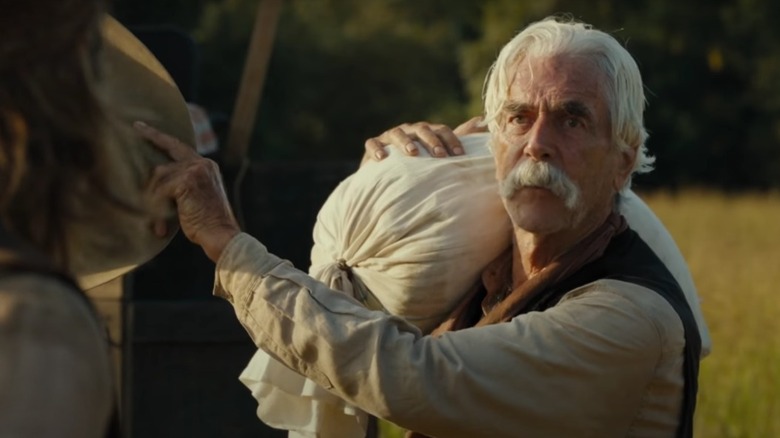
In "1883," the Paramount+ prequel series to the popular show "Yellowstone," the fictional Dutton family's 19th century rise to power is chronicled as their ancestors make their way from poverty in Texas to the promise of new beginnings in the Territory of Montana. The show depicts an unforgiving journey full of hazards as Sam Elliot's Shea Brennan (above) vows to keep his caravan of migrants safe (via Vanity Fair ). What was Montana in 1883 really like, though? Was it truly perilous and difficult to thrive, and what history was made there?
There was in fact a great deal going on in the region, particularly in regard to the rail industry. Great Falls, one of modern Montana's largest and most important cities, was founded in August of 1883 by railroad developer and future U.S. Senator Paris Gibson in order to help expand the territory's rail network (via Library of Congress ). The following month, however, an even more important event came to Montana that forever shaped travel in the United States: the completion of the Northern Pacific Railway (via Ocean Thermal Energy Corporation ).
Montana was full of change and hardship in 1883
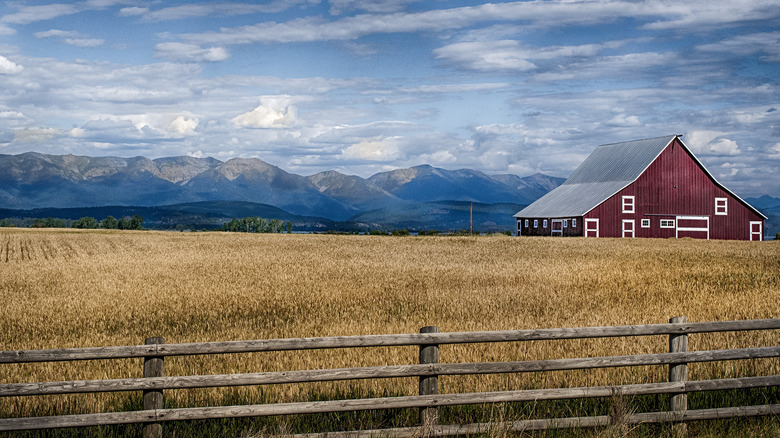
As former president Ulysses S. Grant personally traveled to Montana in order to participate in the final "Golden Spike" ceremony, elsewhere in the territory exceptionally negative change had come as well. Montana is within the natural range of buffalo, and by 1883 was one of the many places where it became clear industrial-scale hunting was one of the causes of the animals' near extinction (via All About Bison ). This snowballed into negatively affecting both the ecosystem and the lifestyles of local tribes, who to this day are working to restore the animals' populations (via CBS ).
Life for the incoming homesteaders was often not much better, something that was highlighted in the short-lived PBS series "Frontier House." The premise of this series was to have modern contestants try to succeed as though they were living on the 1883 Montana frontier. While not 100% accurate to the period or experience (i.e. comparatively minimal risk of severe injury, attack by thieves or Native people, or disease such as smallpox ), it still proved to be a very difficult experience for all involved (via PBS).
Bozeman Magazine
- Restaurants
- Events Calendar
- Food & Drink
- Bozeman’s Choice
- All Regional Events
- Submit an Event
- All Articles
- Past Issues
- All Restaurants
- Arts & Music
- Current Deals, Contests, and Giveaways
- Top 10 Lists
- Contributors
Browse all content by date. News, Articles, Blogs, Photos, Videos
- All Content
- Magazine Articles
- Issue Archive
Hunter's Hot Springs
The forgotten opulence of a bygone era.
Cindy Shearer | Sunday Jul. 1st, 2018
Long before any emigrants came to the Northwest, Native Americans would carry their sick to the place that would later become known as Hunter’s Hot Springs, 20 miles east of Livingston, to bathe in and drink the hot and healing waters. The hot springs were in Crow country, and at certain periods of the year, hundreds of members of that tribe would camp there.
Andrew Jackson Hunter was born in Virginia in 1816 and became a physician at a rather early age in Louisiana. By 1856, Dr. Hunter was serving as a physician for the Illinois Central Railway. After the death of his first wife, he moved to Benton County, Missouri, where he married his second wife Susannah.
With the outbreak of the Civil War, Dr. Andrew Hunter entered the Confederate Army as a surgeon. Dr. Hunter’s family had been slave holders and possessed considerable wealth, which had not been dissipated by the war. Relocating to Missouri as the war was coming to an end, the couple and their small family acquired a substantial farm, a general store and drug store, and a spacious home. The closing days of the war, though, brought an end to their lives there--seen as Southern sympathizers and with his participation in the Confederate army, their home and store were burned to the ground. So began their trek west April 2, 1864.
Originally heading to California along the Oregon Trail, Dr. Hunter changed his mind after hearing stories of gold strikes in Virginia City. Traveling a day behind John Bozeman’s wagon train, Dr. Andrew Jackson Hunter, his wife Susannah, and three children left North Platte along with 15 other travelers in hopes of striking it rich in the gold country of Virginia City.
On July 18, 1864, while hunting antelope a few miles north of the Yellowstone River where the small wagon train was camped, Dr. Hunter spotted the hot springs and several hundred Crow Indians that were camped there. In a memoir written by daughter Mary Hunter Doane, “My Father had spent much time at Arkansas Hot Springs, and it was his thought to return at an early date in order to secure right to these springs as a home. In January 1869, my Father with his family returned to Bozeman and again visited the Springs. In 1870 Father took the place as “Squatters’Right,” there having been no survey of that section.”
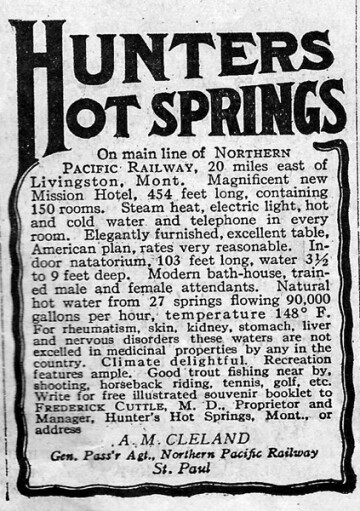
The building of a home in 1870 was closely followed by the building of a dam between the hot and cold springs. This created a pool that was used for many years by both the white visitors and the Crow people that were accustomed to frequent the place. In 1873, bath houses were constructed and work began on the sanitarium.
Until the mid-1870s, the Hunters lived at the springs intermittently due to troubles from traveling bands of Sioux and Piegan Blackfeet. In diaries, newspaper articles, and memoirs the stories of stolen horses, killed cattle, and destroyed gardens are consistent. In an article by historian Merrill Burlingame about the Hunter family and Mary Hunter Doane, he writes, “Mrs. Doane recalls many adventures which took place at the Hot Springs. During any absence of the men of the household, the house was securely barricaded, and Mrs. Hunter and the girls became adept in the use of firearms.” From The Bozeman Courier July 2, 1937, “Upon one occasion when a party of hostile Sioux was headed in their direction, Mrs. Hunter lashed children to the backs of horses and then tied herself to the back of one, and all swam the Yellowstone when it was at flood stage.”
The first post office was established there in 1878, with Dr. Hunter the first postmaster. The resort got its first big boost in 1882 when the Northern Pacific Railroad pushed west through the region. By the next year Dr. Hunter had erected a hotel with full facilities.
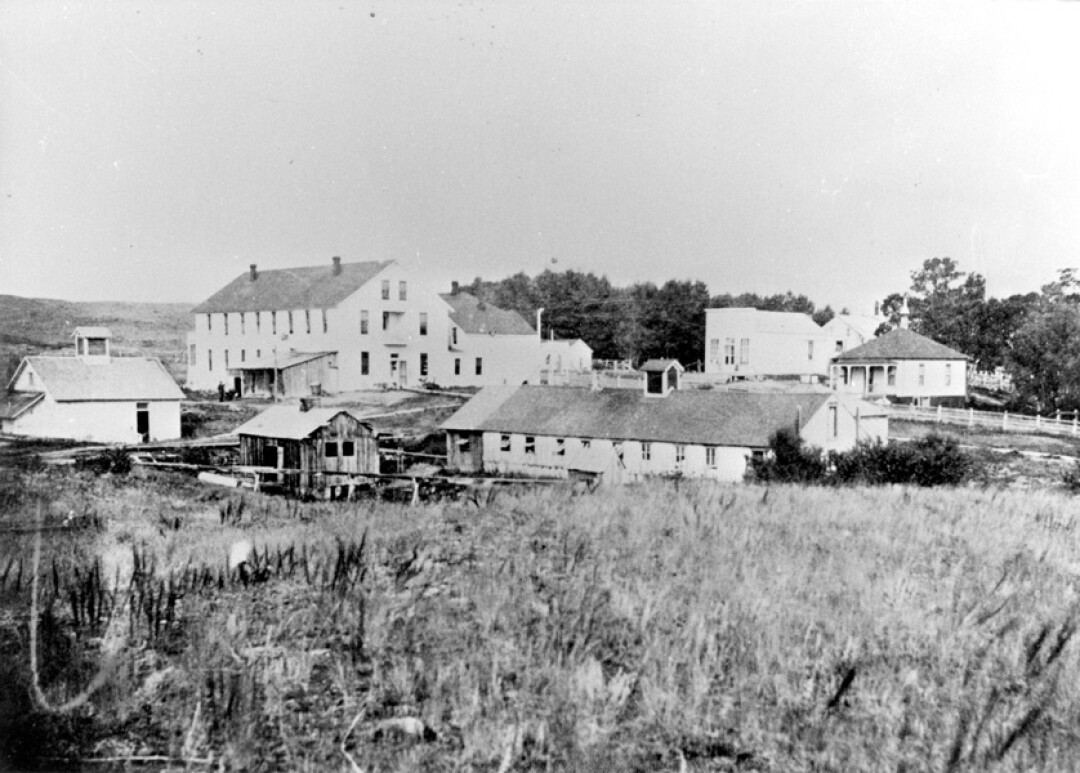
In 1889, the property was once again sold, this time to Mr. and Mrs. James A. Murray. According to the Great Falls Tribune, Murray was “a millionaire Butte banker, who was a collector of hotels and a gambler of heart.” Murray set about to build the most luxurious hotel west of St. Louis. He included the existing hotel and pool area behind the Moorish façade of the new building. Murray had the architectural firm of Link & Haire design and supervise the building project. Fred F. Willson, then working for the firm in Butte, made a number of trips to the Springs to supervise construction.
The hotel was two stories in height with a frontage of 450 feet and a depth which varied from 100 to 250 feet. The hotel could accommodate 350 guests. The semi-circular solarium on the east end of the building was enclosed with art glass windows and decorated with ferns, palms, and other plants. The pool section was reached by an enclosed corridor; the pool itself was 103 feet by 50 feet with forty dressing rooms. The Hotel Dakota was completed in 1909 at a cost of $150,000. At the same time as the hotel was being built, a bottling plant for mineral water was established.

Hunter’s Hot Springs had a farm that supplied fresh vegetables, a ranch that supplied beef, and a herd of dairy cows that supplied the Hotel Dakota with milk; a poultry farm provided eggs and chickens. The resort prospered, the food was superb and there was live music every evening for entertainment and dancing. In 1914, five trains each day, three westbound and two eastbound, stopped at Springdale, providing easy transportation for folks looking for a therapeutic soak, relaxing vacation, or party-filled weekend.
Time, however, brought a change in modes of transportation. At first the automobile was expected to increase the hotel business, but it had a different effect. Travelers tended to travel farther and spend less time in any given place. Then another blow fell when prohibition was enacted in Montana in 1916. Hunter’s Bar had long been one of the best known drinking establishments in the state with a well-stocked cellar of fine wines and liquors.
An article in the Great Falls Tribune stated, “Determined to continue the jovial element of good cheer, but quite out of keeping with traditional standards, the resort management entered the manufacture of liquor. In a tree-shaded hollow the officials set up a distillery and hired a man to operate it. Here, where the necessary water flowed from underground springs, they contrived to make fine bourbon…It was bottled in the old bottling plant and sold to all who came. The liquor business flourish; that of mineral water ceased.”
Bootlegging had an unfortunate effect on the reputation of the resort. By the end of the 1920s, though it was still grand, it was no longer a family place. On November 3, 1932, the Hotel Dakota burned in about four hours. The fire was caused by an electrical fault in the west wing, which was suspected and sought for days before. Ironically, the reservoir and hydrants that were needed to fight the fire had been drained on November 1st to guard against freezing.
Although the hotel was gone, the springs continued to flow and the property sold in 1944. The pool was restored and a Quonset hut erected over it. Harold and Mavis Johnson operated the pool where many area children had weekly swim lessons and attended swim meets. The Johnsons closed the pool in 1974 because of the labor involved in keeping it opened.
In 1989, the property was sold to Japanese investors who put up two greenhouses to take advantage of the thermal springs. This effort failed by the fall of 1992, citing poor economic conditions in Japan.
Today, the only thing that remains of Hunter Hot Springs is the capped springs, which are difficult to find, but can sometimes be seen at the base of a trail of steam that has escaped from the caps. To locate Hunter Hot Springs today and see if you can envision an enormous hotel on its site, take I-90 east past Livingston to exit 354 toward MT-563 Springdale.
About the Author(s)

Cindy Shearer
Cindy Shearer is the Executive Director at the Gallatin History Museum and enjoys local history, live music, and fishing.
View more of Cindy Shearer's work »
Your Guide to the Bozeman Area and SW Montana. Locally & Independently Published
Get involved.
- Contribute Writing
- Cover Artist
- Internships
- Advertise with Us
- Become a Distribution Point
- Where to Pick Up the Magazine
About Bozeman Magazine
- Staff Contact
- Contributor Directory
- Take our Reader Survey
Give Bozeman Magazine a call at:
(406) 219-3455
info @ bozemanmagazine.com ( info (at) bozemanmagazine [d0t] com ,)
Advertise! with Bozeman Magazine
Sign up for our Advertising Insider newsletter to be notified of upcoming deals and deadlines.
Partner Links
- Bozeman Spirits
- Verge Theatre
- Arts on Fire
- Allegra Printing
- Artists’ Gallery
- Cosmic Pizza
- Tim Ford Realtor
- Mellow Mood
- Museum of the Rockies
- Bozeman Doc Series
- Gallatin History Museum
- Kenyon Noble
- Stockman Bank
- Bozeman Symphony
- Red Tractor Pizza
- Cactus Records
- Gallatin Valley Chiropractic
- Warren Miller Performing Arts Center
- Armory Music Hall
- Top Shelf Hockey
- Mid Mod Studio
- Montana PBS
FTC Disclosure | Terms of Use / Privacy Policy | Copyright © 2024 All Rights Reserved
'1883' Recap: The Duttons Make it to Montana But Nearly Lose Everything
Warning, spoilers ahead for season one of 1883.
The finale of the first season of Yellowstone prequel 1883 was truly shocking. Where do I even begin? Just like the real Oregon Trail, "This Is Not Your Heaven" was ruthless, clearing out the majority of the cast in the process. Yes, the Dutton family finally makes it to Montana, but at what cost? Everyone's story seemed to be wrapped up perfectly, so how will creator Taylor Sheridan be adding to the 1883 story? As a reminder, Paramount announced that they would be ordering additional episodes (not labeled a season 2) but we have no idea what that would mean for our favorite characters who survived the trip to Montana. Luckily, executive producer David Glasser explained to the Hollywood Reporter that what they have planned should be really exciting for fans.
"Now the network is excited to bring you something really additional to 1883, which is super exciting. There was one way set with it — there was one version — and now there's going to be two versions.
Everything is well-thought-out with Taylor. So when you see what's coming, you'll see it's pretty exciting. I think 1883 was an incredible journey. We're excited the way fans embraced it and I'm excited for people to see all the other great stuff that we're doing around it now."
With that in mind, here are our 8 main takeaways from episode 10 of 1883 .
Read More: 'Yellowstone' Creator Taylor Sheridan Has 8 New Shows In The Works
Table of Contents
1. Elsa is deteriorating
Right as the group makes it to the fort, Elsa falls off her horse while she's talking to the two young men guarding the gates. It seems like she could go at any moment, but we're obviously still rooting for our favorite heroine...there's no way Taylor Sheridan would actually kill her off right?!
2. Turns out there isn't really a fort
Unfortunately for our group, the former Union Major who is the local surgeon lets James know that he actually can't help Elsa. He has no staff to speak of since the fort was essentially abandoned and is currently populated by the same group of people that murdered the Lakota women and children in episode 9. Because they know that killing all of those men will eventually catch up with them, Shea, James and Thomas know they need to move on. For their own safety as well as for Elsa. James tells his wife that wherever Elsa passes, that's where they will settle down so that they can be with her forever.
3. The group parts ways
The Duttons continue on their journey north, along with Shea and Thomas. Josef and his wife, though still suffering the aftermath of the snake attack, want to keep going with them as well. Noemi offers to drive their wagon for them since they can't, but the rest of the immigrants decide to stay back at the fort and continue on to Oregon without guidance. Colby and Wade head back to Texas after Shea decides to just leave the cattle behind. We later see that the group left behind didn't make it out of Wyoming...so is the way of the frontier.
4. Josef loses his leg
Thomas gives Josef the option to keep his leg and die or to have it removed to have his best chance at survival. He decides to let him take it. It takes the whole group working together with Margaret, Shea and James helping to hold him down while Thomas works the saw...Not going to lie, this scene got way more graphic than I was expecting. After Josef passes out, Shea stitches him up and it seems they got to him in time, because he pulls through.
5. The group is taken in by a friendly Crow tribe
After running into a Crow tribe, they offer to help heal Elsa, who is suffering from a fever. They clean her wounds in the cold creek and take her into a sweat tent, but it's too late. They explain that the Lakota make sure their arrows are deadly. The chief directs James to a place called Paradise Valley, which he says will be the perfect place for his family to settle down and put Elsa to rest. But he warns him that in seven generations his people will come back to claim that land and that his family will want to occasionally hunt there. James agrees to all of it. Foreshadowing?
6. James asks Shea for a favor
Elsa has limited time, but makes James promise her that she'll get to pick the place she is buried. The wagons won't be able to make the trip to the valley in time so James wants to take Elsa there himself without the rest of the group. He knows his wife will only hear the cruelty of not being able to go with them so he asks Shea to present the situation with logic. Margaret is upset but sees her husband crying over their sleeping daughter and knows that it's the only way.
7. James and Margaret say their goodbyes
Margaret tearfully has to say goodbye to her daughter at the camp before Elsa and James set out on their two-day journey to the valley. She lays against her father looking out at the beautiful valley and they share her last moments together. Although we technically saw Elsa get shot by the arrow in the very first episode I really didn't believe she would actually die until they were leaning against that tree. I'm wondering if James names the ranch Yellowstone after her? That way Lightning with the Yellow Hair can live on forever.
8. We see the survivors one year later
Thomas, Noemi, and her two boys finally make it to Oregon, where they find the perfect place to build their new lives together. Josef starts building his new house alone since his wife Risa died upon arrival. Shea sits on a beach looking out at the Pacific Ocean, fulfilling a promise to his wife before he takes his own life. We last see Elsa in her heaven, riding into the sunrise with her husband Sam. It's an emotional ending for everyone on the series, and we have no idea what the future holds for James and Margaret Dutton and their son John. Their family really paid the ultimate price to build the legacy that Kevin Costner's John Dutton is so determined to protect on Yellowstone .
You Might Also Like
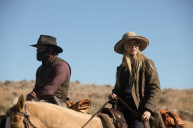
Entertainment
'1883' recap: elsa's heartbreak and the wagon train's fight for survival.
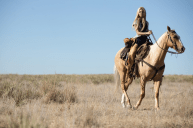
'1883' Recap: Elsa Makes a Life Changing Decision
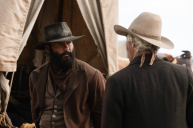
Tim McGraw and Faith Hill Were 'Ugly Crying' Over That Devastating '1883' Finale
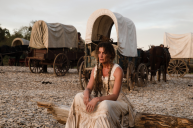
'1883': The 10 Biggest Moments From the First Four Episodes of the 'Yellowstone' Prequel
- Breweries & Distilleries
- Coffee Shops
- Bed & Breakfasts
- Hotels & Motels
- Vacation Homes
- Hiking & Biking
- Hunting & Fishing
- Signature Events
- Watersports
- Communities
- Historical Sites
- Indian Nations
- State Parks
- Western Experiences
- Car Rentals
- Free Travel Guide
- Get E-News Here!
- Interactive Travel Guide
- Itineraries
- NEW! ITINERARY BUILDER
- Regional Maps
- Scenic Drives
- 1.800.346.1876
Theodore Roosevelt Digital Library, Dickinson State University
Teddy Roosevelt’s Travels across Southeast Montana
2020-03-23 23:18:05
The years before Montana became a state were filled with cowboys looking to make their mark on the western frontier. Coming from places like Texas and New York, they chased the idea of what it meant to be a cowboy: wrangling cattle, branding steers and spending days in a saddle.
A young Theodore Roosevelt was one of those cowboys.
Starting in Glendive, Montana, you can trace his steps across the region, you can see places that remain relatively unchanged since the late 1880s. If you stand still, close your eyes and listen, you may even be able to imagine, to understand how the very soil of the West imprinted itself on Roosevelt.
Those impressions never left him, even while he lived in the White House.
During your travels, you may even enjoy reading one or more of his books. We suggest starting with Hunting Trips of a Ranchman or Ranch Life and the Hunting Trail to understand this phase in his life.
Finding solace Roosevelt made his way to the Dakota Territory and the badlands of Montana in 1883. A year later, reeling from the death of his wife and his mother on the same day, Roosevelt returned to the region that had captured his heart. It was here he sought solace in the rivers and streams, buttes and hills, cattle and horses. Roosevelt purchased two ranches upon his arrival, the Elkhorn and Chimney Butte, 12 miles from the nearest homestead. Away from the hustle and bustle of New York City, the young Roosevelt remarked, “The charm of ranch life comes in its freedom, and the vigorous, open-air existence it forces a man to lead.”
Many big adventures awaited Roosevelt on the frontier. Spending his days traveling the region and chasing down horses, he ran into trouble now and again. Roosevelt says his most serious encounter happened in Mingusville, Montana, a town now known as Wibaux. After many days of riding through the prairie, he arrived at Nolan’s Hotel, searching out a place to stay for the night. Roosevelt recounts the story in his autobiography:
I heard one or two shots in the bar-room as I came up, and I disliked going in. But there was nowhere else to go, and it was a cold night… A shabby individual in a broad hat with a cocked gun in each hand was walking up and down the floor talking with strident profanity. He had evidently been shooting at the clock, which had two or three holes in its face.
…As soon as he saw me he hailed me as "Four eyes," in reference to my spectacles, and said, "Four eyes is going to treat." I joined in the laugh and got behind the stove and sat down, thinking to escape notice. He followed me, however, and though I tried to pass it off as a jest this merely made him more offensive, and he stood leaning over me, a gun in each hand, using very foul language…Accordingly, in response to his reiterated command that I should set up the drinks, I said, "Well, if I've got to, I've got to," and rose, looking past him.As I rose, I struck quick and hard with my right just to one side of the point of his jaw, hitting with my left as I straightened out, and then again with my right.
Tip: While the Nolan Hotel no longer exists in Wibaux, you can take a quick 30 minute drive from Glendive and stop in to have a pint at the town’s only brewery, Beaver Creek Brewery . Or, visit the Pierre Wibaux Museum , originally the office building of Pierre Wibaux, whom the town was named after . Pierre was considered the largest cattle rancher in the world in the late 1800s, and friends with Roosevelt. The two stayed in touch throughout the early 1900s. Museum entrance is free.
Medicine Rocks
Roosevelt also traveled farther south in the state and was awed by the beauty of what eventually became Medicine Rocks State Park . Upon arrival he said, “As fantastically beautiful a place as I have ever seen.” Roosevelt was impressed by the eerily-fascinating sandstone rock formations. Years of weathering have given the boulders a “Swiss-cheese” look. Walking through the spires and pillars, Roosevelt would have seen inscriptions and pictographs, dating back centuries before he arrived. Tip: Just an hour and a half southeast of Glendive between Baker and Ekalaka, the park offers hiking, biking, camping and wildlife watching.
Suggested Route: Head east out of Glendive on Interstate 94 for 28 miles, take exit 241 to Wibaux. To get to Medicine Rocks State Park, head south on Highway 7 out of Wibaux for 68 miles. Follow the signs into the park.
Roosevelt also contributed in the early days of the Eastern Montana Stockgrowers Association, as a representative of the Little Missouri region. The group gathered for one of its biggest meetings in Miles City in April 1884. Ranchers were facing issues of livestock rustling. Roosevelt was in favor of an all-out war against the thieves. While the group ultimately decided not to take action that day, the discussions and thoughts eventually led to the creation of several laws to protect livestock from disease and theft.
Many of those laws are still in effect in Montana today, including employing a State Veterinarian to prevent disease and a Board of Livestock, which protects the use of brand laws and inspections to deter theft.
Tip: Just an hour’s drive west of Glendive, Miles City is still a hot spot for cattle ranchers, with a cattle sale every week and the world-famous Miles City Bucking Horse Sale every May. A walking historic tour of the town highlights buildings and homes built in the late 1800s.

Hasten Quickly
While Roosevelt made the western frontier his home during the 1880s, he couldn’t completely escape the “walk and talk” of the East Coast. That was evident one day while talking to one of his cowboys, when he told the man to “hasten quickly there, now!” The cowboy, amused by the comment, began spreading the story around to the point where cowboys started ordering a Hasten Quickly, or a stiff drink, at bars across the region.
Tip: Stop into one of those establishments in Miles City or Wibaux , and chances are you’ll be sitting next to a cowboy fresh off the ranch. Try ordering a Hasten Quickly, and see if your bartender knows what you’re talking about. We guarantee this is a novel conversation-starter.
Suggested Route: Take Interstate 94 west out of Glendive for 75 miles. Take exit 141 into Miles City.
Little Bighorn Battlefield National Monument
Upon becoming President in 1900, Roosevelt sought 200 paintings of Indian warriors who survived the Battle of the Little Bighorn 25 years prior. For this work, he commissioned emerging American painter Joseph Henry Sharp. A cabin was built in Crow Agency near the Little Bighorn Battlefield for him to complete the work. Many of those paintings are now on display in public institutions, including the Smithsonian museums in Washington, D.C. Others are available for viewing in a more intimate setting, closer to their source at the Big Horn County Museum in Hardin, Montana.
Tip: Plan a full day at the Little Bighorn Battlefield National Monument and walk the paths where the Northern Plains Indians fought and defeated Lt. Col. Custer and the 7 th Cavalry in June 1876. Be sure to use or buy your National Park Service pass here. Next, stop at the Big Horn County Historical Museum in Hardin to view some of JH Sharp’s early work – the originals are simply stunning.
Years later, after Roosevelt sold his ranches and returned to live full-time in the East, he traveled back to Montana for hunting trips. In 1893, his friend Paul McCormick built a cabin at the confluence of the Yellowstone and Bighorn Rivers to host some of those expeditions. Today, you can visit that cabin, which was moved to Billings and became the Yellowstone County Museum .
The time Roosevelt spent in the West deeply influenced his life story. Considered the “conservationist president,” he established the United States Forest Service. Roosevelt is also credited with creating national forests, federal bird and game preserves and national parks and monuments, which protects 230 million acres of land. Much of this remains public land in Montana today. Roosevelt stands next to other great conservationists like Henry David Thoreau, Aldo Leopold and John Muir.
Tip: Visit the Yellowstone County Museum, and see a portrait of Roosevelt, signed to McCormick in 1908. Or check out the lower level, which houses the largest Ghost Dance exhibit in the world, in addition to other Western history such as wagons, saddles, firearms and more. Admission is free.
Suggested Route: Take Interstate 94 west out of Glendive for 159 miles. Take exit 49 and head south on MT-47 for 29 miles. Merge onto I-90 for 14 miles. Take the exit for US-212 East and follow the signs on your right for the Battlefield. To get to Billings, get back on I-90 west for 57 miles. Take exit 452 and turn right. Go 5 miles to the airport, and the museum will be at the end of Terminal Circle.
More from our blog:
Nowhere Better than Colstrip, Montana
A cheat sheet to rodeos, nowhere better than baker montana, stay up to date.

What Route Do the Duttons Take in 1883, Explained
‘ 1883 ‘ is a gritty Western drama series that serves as a prequel to ‘ Yellowstone .’ While fans of the latter show are aware of the Dutton family’s dynasty that is the Yellowstone Ranch, its origin story is sketched out in the prequel. In ‘1883,’ the first generation Dutton rancher, James Dillard Dutton , and his family comprising wife, Margaret, and children, Elsa and John, travel across the Great Plains in search of a land to call their own. The Duttons’ road North is filled with dangers and difficulties. If you are wondering which route the Duttons take and how it leads to their ultimate destination, the place that would later become the Yellowstone Ranch, here’s everything you need to know!
Duttons’ Route, Mapped
In the first episode of ‘1883,’ James Dillard Dutton arrives in Fort Worth, Texas . His family later joins him in the town, where they have a harrowing experience that will be the first of many in the days to come. James wishes to move his family away from Texas’s impoverished and outlaw streets. Therefore, he joins Shea Brennan , a Pinkerton Agent and former Civil War veteran leading a group of immigrants across the Great Plains along the Oregon Trail. We later learn that the Duttons are originally from Tennessee.
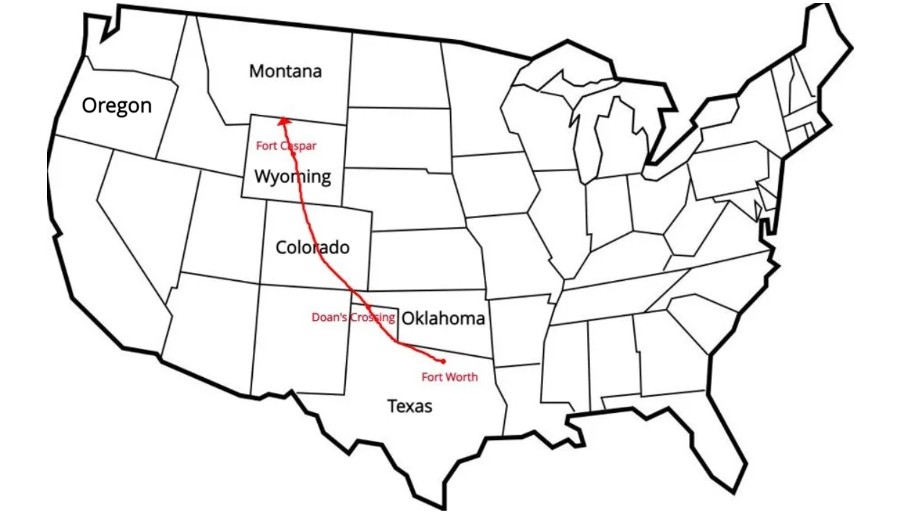
The Duttons set out from Fort Worth and set up their first camp with Shea’s caravan on the banks of Trinity River In Texas. Over the next few episodes, the group slowly moves North along the river basin across Texas. They later cross the river in the fourth episode , and the caravan suffers numerous casualties in the process. The Duttons continue their journey from the Eastern side of Texas until they arrive at Doan’s Crossing in the sixth episode. Doan’s Crossing is a small settlement on the Texas-Oklahoma boundary situated on the banks of the Red River.
The Duttons and their companions cross the Red River and the Texas boundary. In the seventh episode , they pass through a Native American territory belonging to the Comanches. This patch of land lies between Colorado and Texas and is a part of Oklahoma in the present day. The group survives a storm and a run-in with the bandits as they pass through Colorado, with Shea suggesting to the immigrants that they settle in Denver, Colorado. However, James decides to lead the group all the way to Oregon. By the ninth episode, the caravan and the Duttons are close to crossing Colorado and reaching Wyoming.
They face the Lakota people, a Native American tribe who historically have a presence in the state. The group is heading towards Fort Caspar, a military outpost in Wyoming which further reiterates that the group has reached (or is near) Wyoming and is in the final stages of their journey. Montana lies to the North of Wyoming, but the group’s final destination remains Oregon. However, with Elsa’s recent injury, it seems like the Duttons’ plan will change. Elsa is nearing a certain death , and James resolves to find land the family can bury Elsa on. He further promises to make the land the family’s new home. Thus, all signs point to Elsa’s death leading the Duttons to settle in Montana. Although the Duttons set out to follow the Oregon Trail, they end up taking a few detours that lead them on a unique route.
Read More: Will Josef and Risa Die in 1883? Theories
SPONSORED LINKS

- Movie Explainers
- TV Explainers
- Search Please fill out this field.
- Newsletters
- Travel News
Eric Nelsen, Star of '1883,' on the New 'Yellowstone' Prequel and Texas Hidden Gems
The much-anticipated prequel to the hit show premieres Dec. 19 on Paramount+
Astrid was the Senior Special Projects Editor at TripSavvy.
:max_bytes(150000):strip_icc():format(webp)/Astrid-Taran_WebReady-1-cbabb21bbf364534a230dbedf5b6a785.jpg)
Courtesy of Paramount+
The Paramount network series "Yellowstone" is undoubtedly one of the biggest shows on television. Following the trials and tribulations of the Dutton family—the owners of the largest ranch in Montana—"Yellowstone" recently drew in almost 15 million viewers to its season 4 premiere as it aired, with millions more streaming it later that evening.
So it's no surprise that the show's very dedicated fanbase was thrilled when the show announced it would be spawning two spin-offs, "1883" and "6666." The former, which debuts on Paramount+ Dec. 19, chronicles the origins of the Duttons as they build the foundations of what will become their iconic family ranch.
Filmed in Fort Worth, Texas, "1883" boasts a star-studded cast, including actors Sam Elliott, Billy Bob Thornton, and country music superstars (plus real-life married couple) Tim McGraw and Faith Hill. Eric Nelsen, who plays a young cowboy named Ennis, also stars. The actor—who, in a stroke of kismet, moved to Fort Worth months before he was offered the role—recently sat down with TripSavvy to talk about cowboys, the American West, and his favorite spot to order a margarita.
What was it like when you first heard you were going to be a part of this prequel?
Being a huge fan of "Yellowstone," I was ecstatic. My whole family are huge, huge "Yellowstone" fans. I think, out of any job I've ever been up for, this was the one where my family was like, "If you don't book this show, we will not talk to you for a while." [Laughs] This is the first show I've worked on where every single one of my family members is obsessed, so it's been great.
"Yellowstone" was one of the highest-rated shows on television in 2021. Do you think new fans gained from pandemic viewership contributed to its huge numbers?
One hundred percent. For so much of my family, "Yellowstone" was their pandemic binge show. It was the chosen binge-watch for so many people.
Why do you think that was?
I think a large part of it was people being inside all day, watching the show, and falling in love with the beauty of Montana , which is [the show's] central character. People saw this beautiful, insanely... almost heavenly place that people live in, and this lifestyle that seems so wild to people, although it's true for some, and it's just the combination of it all. As a kid, I always wanted to grow up and be a cowboy. You see them in the movies and stuff, but if you're not born and raised into that culture, it's a world that you don't get to experience. And [showrunner] Taylor Sheridan's writing, which is unlike anything else we see on film and TV, brought it to life.
Where does "1883" pick up in relation to "Yellowstone"? What should fans be expecting when they tune in?
Fans are going to see where the Dutton family started and where they came from, and the journey they had to go through to get to Yellowstone. The way Taylor [Sheridan] writes what these pioneers went through at the time is so raw and so real. He doesn't glamorize it in any way whatsoever. So it's really a rollercoaster of a show.
While "Yellowstone" was set in Montana, "1883" takes places in Texas—and you guys actually filmed it there, too. In a recent interview , Taylor Sheridan said part of the reason he chose to film "1883" in Fort Worth was due to its deep connection with the history of the American cattle business. Did you feel that sense of Western history while you were filming?
One hundred percent. It's really got that old history feel still. The buildings, a lot of them, we didn't even have to change, because they're still old 1800s saloons. Our story actually begins in the Fort Worth Stockyards, and to be starting our story in the stockyards and filming them in the stockyards where this [history] actually happened was just incredible.
Fort Worth has been booming as a city for a little bit, it's been growing and the hustle and bustle is picking up, but it has not lost its charm or its old-school Texas feeling. There are cowboys walking all over the place, and there are still Western stores, and you feel like you're in another world. I've loved every second of it. I'm a huge fan of Fort Worth.
I heard you were already living in Fort Worth when this show came along. Is that true?
It's so crazy because I was in New York City for about 12 years. I met my wife there, who is from Fort Worth, her whole family is here. When the pandemic hit, we were like, "Let's get out of L.A. Let's be by family." So we moved to Fort Worth with our daughter—we spent the whole pandemic here—and then this show comes across my desk and the breakdown says that it films in Texas. Later, when I got the part, Taylor [Sheridan] calls me up and tells me, "You're going to be 10 minutes from where we're filming this thing." [Laughs] The odds of something like that happening are so few and far between.
Since you're now a Fort Worth local, what are some spots you and your family frequent?
Oh, we are a big Joe T 's family. Mexican and margaritas at Joe T's is our go-to. There's a new hotel that just opened up by the stockyards, Hotel Drover , and it's incredible. If you're ever in Fort Worth and want a really cool cowboy, Western experience, Hotel Drover is it. Big fan.
Have you done any day trips from Fort Worth? Are there nearby destinations you love?
We got to film around Mineral Wells, and the history there is just incredible. We stayed at [ The Baker Hotel ], one of the most haunted hotels in the country, where all the ghost hunter shows have gone to. We were one of the first to stay in it after they renovated and it was absolutely incredible. The history in that town alone was so cool to learn about. We also filmed a lot in Weatherford, the cutting horse capital of the world, and to be surrounded by all the cowboys out there was a whole experience in itself. And we've been out in Amarillo, out at the Four Sixes , the second largest ranch in the entire state of Texas, which was magical.
What has been your favorite part about your time in Texas so far?
The one thing that blows my mind is almost every single night I look up and I'm seeing shooting stars. The big sky, open-air feeling you get on these ranches is unlike anywhere else I've been in the country. It's beautiful, it really makes you fall in love. If I didn't ever have to leave Texas, I'd be okay with it.
Related Articles
More related articles.

1883 Ending Explained & The Symbolism Behind the Final Scenes
By: Author Anna Stanek
Posted on Last updated: 09/17/2023
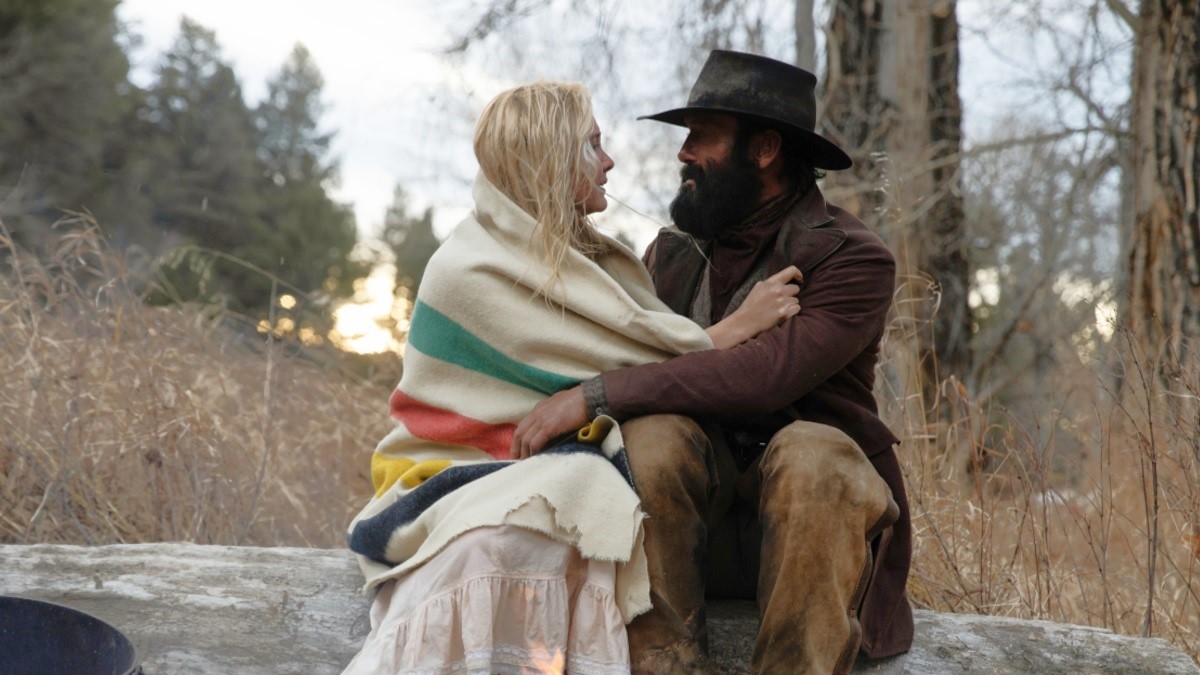
This post may contain affiliate links. We earn from qualifying purchases. Learn More
1883 brought us the origin story of the Dutton family and their Montana cattle ranch. The now powerful Dutton family came from humble beginnings, leaving behind a life of poverty in Tennessee.
1883 was filled with hardships, heartbreaks, suffering, and adventure. The series painted the harsh realities pioneers faced on their journey out West. The Duttons were among the many who journeyed Westward in hopes of a fresh start.
The ending of 1883 brought many viewers to tears with the heartbreaking loss of the beloved characters Elsa Dutton and Shea Brennan. However, the finale also brought on hope, as we see Josef, as well as Thomas and Noemi, begin the next chapter of their lives.
Keep reading if you want the 1883 ending explained and learn what it means for the future of the Dutton family.
The Ending of 1883 is the Beginning of the Yellowstone Dutton Ranch
At the end of 1883, the Duttons find themselves in Paradise Valley, Montana, far off from their original destination of Oregon. We learn all it took for the Duttons to make it to Montana and establish their new homestead.
As her dying wish, Elsa chose Paradise Valley, Montana, to be her final resting place. She was suggested the spot by Spotted Eagle , a Crow elder who had tried to help save Elsa before realizing it was too late.
After it became clear that Elsa would not recover from the infection brought on by the arrow, James took her to Paradise Valley. After choosing a spot near some trees, Elsa passes away in her father’s arms.

Not wanting to leave Elsa behind after burying her, James and Margaret decided to build their new home in Paradise Valley. This is where they build their new life and establish the Yellowstone Dutton Ranch, which eventually grows into a cattle empire.
Elsa’s Death Was Instrumental to the Storyline
While heartwrenching, Elsa’s death was vital for the storyline. If she hadn’t become ill and passed away from her infection, the Duttons wouldn’t have ended up settling in Montana.
The Duttons would have very likely continued on their journey out West all the way to Oregon if Elsa would have never gotten shot. In this case, the Yellowstone Dutton Ranch would have never come to be.
Perhaps the Duttons would have still established a ranch in Oregon if they settled there. However, it is unlikely that it would’ve become as powerful as the Yellowstone Dutton Ranch is today.
Elsa’s death was key to the development of the Yellowstone Dutton Ranch and the Dutton family’s rise to power in Montana.
Why Did Shea Kill Himself?
Shea killed himself at the end of 1883 because he completed his mission of leading the wagon train to Oregon and didn’t see any point in going on without his wife and daughter. Shea had been left devastated after his wife and daughter both perished from smallpox.

Shea waited until Oregon to kill himself because he promised his wife that he would see the ocean for her. He wanted to fulfill his final personal request before taking his own life.
What Did the Hummingbird Symbolize to Shea?
The hummingbird symbolized that Shea’s late wife was with him in spirit. The hummingbird hovered next to him for some time before flying away. Her spirit was there to enjoy the beach with him in his final moments.

After the peaceful yet somber moment, Shea killed himself to finally reunite with his wife and child. He saw the hummingbird as a sign that he could finally let go so he could be with his loved ones forever.
Is Elsa’s Husband Sam Dead?
After Elsa’s death, we see her narrate to the audience what her personal Heaven is like. We see her reunite with Sam on horseback before they ride off together.
“There is a moment where your dreams and your memories merge together and form a perfect world. That is Heaven. And each Heaven is unique. It is the world of you,” says Elsa.

“The land is filled with all you hold dear, and the sky is your imagination. My Heaven is filled with good horses and open plains and wild cattle and a man who loves me,” she continues.
As Elsa explains, each Heaven is unique to every person. It is a place where dreams and memories merge. This implies that Sam can simultaneously be alive while also being in Elsa’s Heaven.
There is no clarification if Sam is actually dead or alive at the end of 1883 . However, it seems given Elsa’s explanation of heaven that it is possible for him to still be alive.
The End of 1883 Reveals an Event That Will Occur in Yellowstone
While Spotted Eagle is happy to provide James Dutton with land in Paradise Valley to build a home for his family, it comes with a warning.
Spotted Eagle tells James that in seven generations his people will rise up to take back their land. James tells him that in seven generations his people can have their land back.

As many fans have calculated, Tate Dutton is believed to be the seventh generation since Spotted Eagle’s warning to James. If he is in fact the seventh generation of Duttons to live on the ranch, the fate of the family’s land is up in the air.
In season five of Yellowstone , we could see this foretelling be filled. The Duttons could potentially lose their valuable cattle ranch and the Broken Rock Reservation could make a claim to the land.
What Happened After 1883?
After the events of 1883, James and Margaret turned their homestead into a ranch. They went on to have one more child, a son named Spencer.
Sadly, pain and hardship continued to haunt the family. James Dutton died 10 years later after being shot by a group of horse thieves. Margaret died shortly after, freezing to death in Montana’s unforgiving winters.
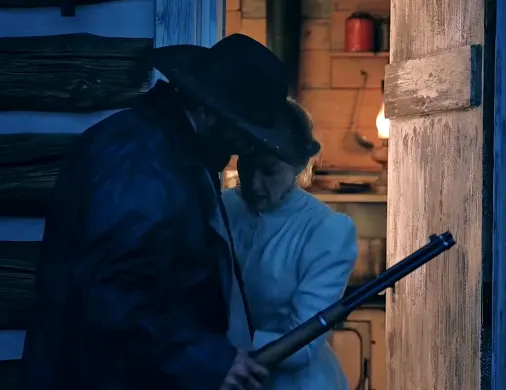
Before her passing, Margaret wrote to James’ brother Jacob and his wife Cara begging them to help. Upon receiving her letter, Jacob and Cara traveled to America to help out at the ranch.
By the time they arrived, Margaret was dead and Spencer and John were struggling to stay alive. Fortunately, Jacob and Cara raised the boys as their own and turned the humble homestead into a ranching empire.
The Dutton’s Story Continues With 1923
As show creator Taylor Sheridan intended 1883 to be a limited series, there will be no season two. However, the Dutton family’s story continues on with the prequel series 1923.
While she has long passed away at this point, Elsa Dutton serves as the narrator of 1923. She helps fill in the audience with the gaps between the events of 1883 and 1923.
1923 takes place 40 years after the events of 1883. Jacob and Cara are running the ranch along with John and his son Jack. Spencer is working as a big game hunter in Africa after serving in WWI.
During 1923, the Duttons face a whole new set of challenges. They must keep up with the ever-changing times of the early 20th century while dealing with cattle theft, drought, and lawlessness.
In addition to the story of the Dutton family, 1923 also introduces us to Teonna Rainwater. Teonna is a young Indigenous woman who is forced to attend a government boarding school where she is subjected to abuse. She is also an ancestor of Yellowstone’s very own Thomas Rainwater of Broken Rock Reservation.
Ken Luikart
Sunday 24th of September 2023
I’m sorry but I hated the end of this magnificent story. It kind of jus ended. Death is not victory…. Her death was truly sorrowful but sams death - both deaths - was a victory for evil. The devil won. It sucked.
Thursday 21st of September 2023
In my mind the hummingbird was Elsa come to say goodbye to Shea since she talked about coming to see him at the ocean.
Kevin Appel
When Shea saw the hummingbird it was special yes. What made it special was it was a Ruby Red Hummingbird and it was a female. You can tell by the lack of red on its neck. It was white and that makes it a female hummingbird.
Butch Smith
1883 is probably the best I have ever watched. I have started 1923 a couple of times, but, I just can't get into it. Same with Yellowstone 1883 really spoiled mr I guess
Nancy Murphy
Wednesday 20th of September 2023
I felt the show was well written and the characters were excellent in their parts. Would of love Sam come back from Oregon after he saw the ocean for his deceased wife.would love to see 1923 on CBS OR ABC as all we see is old junky reruns do to strike. Thanks for making a good show to watch.

Montana Guided Whitetail Deer Hunting

Whitetail deer are too often over looked in Montana! Boone and Crockett will confirm that the Flathead National Forest is one of the largest producers of trophy whitetail deer on public land in the country. We believe we offer hunters an incredible opportunity to hunt whitetail deer here in Montana. Deer here can be either mountain whitetails or plains whitetails. Swan Mountain Outfitters specializes in mountain whitetail Deer. Hunting for whitetail deer in the mountains of Montana is unique experience, done differently than in the midwest or south.
What Sets Us Apart
Swan Mountain Outfitters offers a variety of choices to hunt Whitetails either in combination with other species or targeting whitetails specifically, and choosing archery or rifle. You can hunt Whitetail deer by horseback or you can hunt using stands and blinds. We hunt public land exclusively, in the mountains of Flathead National Forest in Northwest Montana. Whitetail deer in our part of Montana are typically found at the lower elevations around our base camp and throughout the Swan-Seeley Valley, you’ll find them in the foothills and clearcuts. Because there is so much food and water in their natural habitat, you don’t need to pattern whitetail deer in Montana in the same manner as you would in other parts of the country; there are no acorns. We have quality Whitetail deer hunting in Montana primarily because our deer, not being over hunted, live longer. For example, it is possible to down a deer five years old or even older with much more developed racks.
Guided Archery Whitetail Deer Hunts
Hunters that enjoy archery hunting for whitetails will truly enjoy the hunting in Montana. We have thousands of acres of public land that we archery hunt. We have scouted the areas and have set up tree stands and blinds for our archery hunters. Our archery hunts are one of more affordable hunts as we can service more hunters with one guide since the majority of the time is spent in stands or blinds.
Current Trip Rates
2024 hunting season.
Group Discount Rates: 10% for groups of 4+
Family Discounts: Son/daughter Discount (swan location only): 50% discount for under age of 25 hunting with parent. Hunting Spouse Discount (swan location only): 25% off.
One-on-one guide: $1500 extra
3% Administrative Fee : All multi-day trip rates will have an additional 3% administrative fee added per reservation. If you have any questions please feel free to call us at (406) 387-4405.
Cancellation & Refund Policy: For all hunts, $1,000 per hunter is required to secure the reservation. A secondary deposit of $2,000 is required no later than March 1st the year of the hunt. Both deposits are non-refundable and non-transferrable. The remaining balance is due June 1st. If you do not get drawn we will refund a deposit, but will not for any other reason. There are no refunds due to weather or not harvesting an animal. Since all of our hunts are free chase, there is a chance you may not see an animal during your hunt. If the thought of going home without of an animal is not palatable to you, do not book a hunt! Credit Cards accepted for initial deposit with no fee, all other subsequent payments can be made with a check or cash or a credit card. If you choose to pay with a credit card a 3% convenience fee will be added. Above prices do not include tags/licenses that are paid directly to the state of Montana, or a Hunter Defense Fund fee of $50 collected of all outfitted clients of Outfitter members of the Montana Outfitter & Guides Association for the purposes of defending nonresident hunting rights in the state of Montana. All hunts are offered under Montana License #34041, Patrick M. Tabor Jr. 26356 Soup Creek Road, Swan Lake, MT 59911 (406)-387-4405.
2025 Hunting Season
Cancellation & Refund Policy: For all hunts, $1,000 per hunter is required to secure the reservation. A secondary deposit of $2,000 is required no later than March 1st the year of the hunt. Both deposits are non-refundable. The remaining balance is due June 1st. If you do not get drawn we will refund a deposit, but will not for any other reason. There are no refunds due to weather or not harvesting an animal. Since all of our hunts are free chase, there is a chance you may not see an animal during your hunt. If the thought of going home without of an animal is not palatable to you, do not book a hunt! Credit Cards accepted for initial deposit with no fee, all other subsequent payments can be made with a check or cash or a credit card. If you choose to pay with a credit card a 3% convenience fee will be added. Above prices do not include tags/licenses that are paid directly to the state of Montana, or a Hunter Defense Fund fee of $50 collected of all outfitted clients of Outfitter members of the Montana Outfitter & Guides Association for the purposes of defending nonresident hunting rights in the state of Montana. All hunts are offered under Montana License #34041, Patrick M. Tabor Jr. 26356 Soup Creek Road, Swan Lake, MT 59911 (406)-387-4405.
Photos from the Field
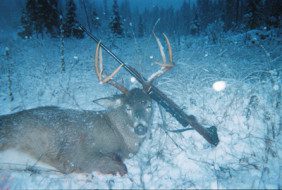
Featured Videos

Swan Mountain Hunting

Swan Mountain Review

Fly Fishing in Montana
Yellowstone And 1883 Filming Locations Include Gorgeous Travel Spots
Yes, you can visit the Dutton family’s ranch.
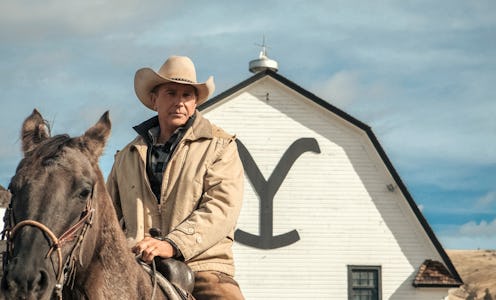
If Kevin Costner riding a horse against the backdrop of idyllic landscapes in Paramount’s Yellowstone made you consider donning a cowboy hat and heading to a nearby ranch, you’re not alone. In the Western drama Yellowstone , already on its fourth season, a Native reservation and land developers are trying to gain ownership of the Dutton family ranch, the biggest cattle ranch in all of Montana. But not if John Dutton (Costner), the family patriarch, can help it.
This December, series creator Taylor Sheridan is also releasing a Yellowstone prequel, 1883 , starring Sam Elliott and real-life couple Faith Hill and Tim McGraw . The spinoff will follow the Dutton family’s journey in the late 19th century — 1883, to be exact — as they travel from the Great Plains to Montana — before they became the all-powerful Duttons fans have come to know and love. So expect to see even more unspoiled terrain in the new show.
Of the decision to shoot in locations with breathtaking views and real-life ranches sprawling with cattle, Sheridan told Entertainment Weekly , “ I don’t build a world with visual effects ,” adding, “I go shoot these corners of the world that people haven’t seen.” Though it’s “incredibly expensive” and “very difficult” to do so, he is adamant, “When you need 50 wagons, you’re going to see 50 [real] wagons.” If you, too, want to unleash your inner rancher, here’s a list of all the places where Yellowstone and 1883 were filmed for your visiting pleasure. Whether you travel on horseback is completely up to you.
Yellowstone And 1883 Filming Locations In Montana
The Dutton family ranch is at the crux of the Yellowstone plot; outside parties clamor for ownership of the expansive property while Costner’s John and his kin fight to protect it. And understandably so. Many a scene has been filmed in the expansive 6,000-square-foot lodge. Carla Curry, Yellowstone ’s set decorator, even said in an Inside the Real Yellowstone Ranch special , “This is what makes this show sing, is that this lodge has actually become a character in our show.”
The gorgeous real estate complex is actually a real-life operational, family-owned ranch in Darby, Montana, the Chief Joseph Ranch . According to the establishment’s website, the 2,500-acre ranch was originally an apple orchard in 1914, before previous owners built lodges and barns. Fans of the show or those who just want to experience ranch life can book any of the two cabins for rent for $1,200 to $1,500 a night. Or, for a cheaper option, fans can take photos with the “Dutton Ranch” sign by the entrance.
Similarly, Yellowstone ’s Broken Rock Indian Reservation led by Thomas Rainwater (Gil Birmingham) is also filmed in actual Native American territory in the state. The Crow Indian Reservation of the Crow tribe, located in southern Montana and established in 1868, is the largest of the tribal lands in the state. Of allowing the team to shoot on native land , Crow Nation tribal chairman AJ Not Afraid told Variety , “Our perception had always been more stereotypical, but here the folks at the show came out and reckoned the terrain and the people, and they got a better taste of the native side.” He added that as long as they “had had the chance to portray some of the Native facts,” they were for shooting. The casino scenes were also filmed on the property, at the Tribal Casino in Crow Agency.
Another century-old historic site featured in the series is the Montana State Capitol in Helena, where the governor’s office scenes — including the courtroom scenes — are filmed. Tourists are allowed to visit the structure, and tours around the Hall of Governors are also available.
As for the gorgeous scenery in view with the mountain ranges? That was actually filmed at Bitterroot Valley , a portion of the Rocky Mountains.
Yellowstone And 1883 Filming Locations In Texas
Sheridan, a Texas native, also included destinations in his home state in both Yellowstone and its spinoff, including two other ranches. When Jefferson White’s ranch hand character Jimmy Hurdstrom is sent away to, er, learn how to cowboy in Yellowstone Season 4, he goes to the Four Sixes Ranch . That’s actually another operational ranch in real life, spanning 260,000 acres and established in 1870. (It served as the inspiration and will be the main location for another Yellowstone spinoff, 6666 , Outsider reported.) Sheridan also highlighted some of his own go-to local joints in the series, including Mary’s Brazos Cafe in Parker County.
Meanwhile, the spinoff 1883 also spent a lot of time filming in Texas this summer. Similar to the Dutton family ranch, the main ranch used for 1883, Bosque Ranch Headquarters in Weatherford, Texas, is another operational horse ranch and is, in fact, owned by the show’s creator. (Sheridan, an avid horse enthusiast, was even inducted into the Texas Cowboy Hall of Fame .) According to the ranch’s website , it boasts weekend events, competitions, and rodeos, and offers dining experiences as well as private spaces for rent.
The historic district of Fort Worth Stockyards , in Fort Worth, Texas, also previously known as “Cowtown,” was another major filming spot for 1883 . The tourist spot boasts Old West gunfight reenactments during weekends and daily cattle drives (yes, including photo opportunities with the livestock). It’s an activity hub, so expect dining and shopping options for visitors. Some Fort Worth locations were already featured in Yellowstone , including the Will Rogers Memorial Center , a 120-acre equestrian and event complex, but the spinoff will highlight more of its livestock-focused history.
Also among 1883 ’s filming sites are the historic Granbury Square , with its streets lined with local shops and dining options, as well as the interiors of local restaurant Farina’s Winery & Cafe. To recreate the 1883 set experience, join a walking tour of Granbury and enjoy a glass of wine at Farina’s for a nightcap.
Yellowstone And 1883 Filming Locations In Utah
Most of the scenes from Seasons 1 to 3 were actually filmed at the Utah Film Studio in Park City, including the Duttons’ master bedroom, the governor’s office, as well as others that required CGI in the studio’s soundstages. Similarly, some of the Montana scenery in the first three seasons was actually the Utah landscapes of Heber City, Oakley, Grantsville, Kamas, and Logan. By the fourth season, however, Yellowstone ’s production left the Beehive State and filmed exclusively in Montana and Texas.
Utah Film Studio’s vice president, Marshall Moore, shared the effect of the show’s exit on Utah’s tourism . Speaking to Deseret News , he said, “Even I was getting calls asking, ‘What’s going on with “Yellowstone?” They were hiring this, buying this. Now we don’t have any of that business.’”
Outside of studios, the series was also filmed in some real-life Utah establishments. Remember Dan Jenkins (Danny Huston), the aggressive real estate developer plotting to build a casino (and more) on Dutton property? His modern lodging abode is actually a Utah location: the Nicklaus Clubhouse Promontory Club in Park City. It boasts a golf course and an equestrian center, among other amenities, plus guests can get opt to ski in the Rocky Mountains.
The nightclub that Beth Dutton (Kelly Reilly) frequents in the series is the Outlaw Saloon in Ogden, Utah, which typically boasts of a bustling Utah nightlife. According to the San Antonio Express, the show even prominently featured Americana artists both on screen (mostly performing in the Saloon) and off, helping introduce them to a bigger audience.
This article was originally published on Dec. 29, 2021
1883 Review: Journey Northwest With The Ancestors Of Yellowstone
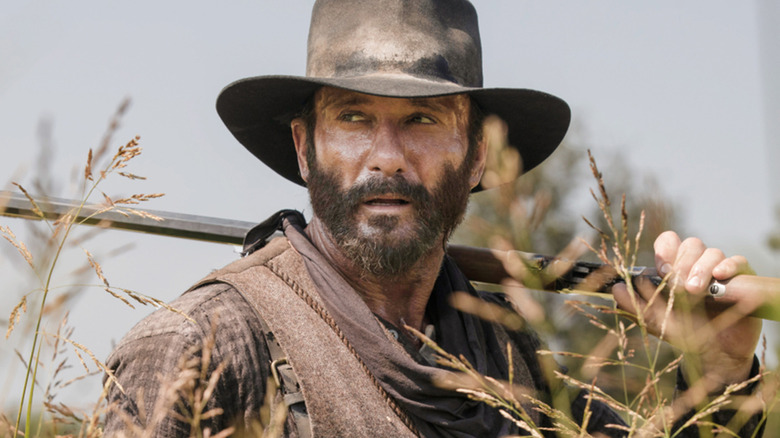
The Paramount+ series 1883 premieres its first two episodes today and I got a chance to see them in advance. I've also seen the third one, and let me tell you, folks, I'm absolutely hooked. Here is the official info for the show:
Created by Academy Award Nominee Taylor Sheridan, "1883" is the highly anticipated prequel to the Emmy nominated series "Yellowstone." Premiering December 19th on Paramount+, the original series stars Academy Award nominee legend Sam Elliott, Grammy Award Winner Tim McGraw, Grammy Award Winner Faith Hill, Academy Award winner Billy Bob Thornton, Isabel May and LaMonica Garrett. "1883" follows the Dutton family as they embark on a journey west through the Great Plains toward the last bastion of untamed America. It is a stark retelling of Western expansion, and an intense study of one family fleeing poverty to seek a better future in America's promised land – Montana. Produced by MTV Entertainment Studios and 101 Studios, "1883" is executive produced by Sheridan, John Linson, Art Linson, David Glasser, Ron Burkle and Bob Yari.
Setting the Scene
Right off the bat, I want to tell you that you do not have to watch "Yellowstone" to get everything about "1883 ." Though it is connected (and little Audie Rick, who is just the cutest, plays John Dutton Sr.), you don't have to know a single thing about any of the characters or the locations. We're starting off in Texas and heading to Montana, and that's all you need to know.
The show starts off (and there are very mild spoilers here, but mostly things you'll see in the trailer) with a rough scene in which some of the settlers, including Elsa Dutton (relative newcomer Isabel May), are attacked by a group of Native American fighters. It's dark, but what you take away from it is Elsa's absolute determination to fight for everything she loves. The next scene has what can only be described as an acting tour de force by the beloved Sam Elliott's character, Shea Brennan. I won't tell you what happens, but if you think you loved him before, you'd better prepare yourself. The Elsa scene is a flashforward, and the Shea scene is a flashback.
We have a full character guide for you from the "1883" actors themselves, but let me lay it out for you. Shea is a veteran of the Civil War, and he's been through absolute hell. He's got severe PTSD, something no one had a name for back then. He and LaMonica Garrett's Thomas (a former Buffalo Soldier who served with Shea) are now Pinkerton agents who are hired to accompany a wagon train Northwest to find new places to settle.
'That's No Man's Land and That's Where We're Heading'
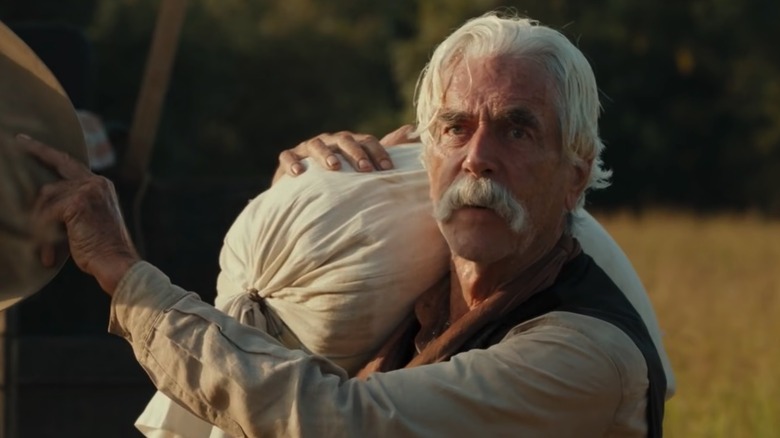
The wagon train's group includes Tim McGraw's James Dutton, his wife Margaret Dutton (Faith Hill), his daughter Elsa, son John, hired cowboys including Eric Nelsen's Ennis, and a group of Austrian/German immigrants who don't yet have the skills to survive. Among their number are some of the Roma people, who are dealing with prejudice from their fellow immigrants. This is a rough land, and "1883" really makes that clear. From having the group inspected naked for smallpox, to an attempted assault, to bandits and sudden deaths, a journey like this can break you, and it often did. One moment stands out, when a couple in the group is discovered with smallpox sores and told to go lie down by a river and die. No one has time or energy for compassion. And yet...
What's so beautiful about "1883" so far is, despite the harsh life these travelers are leading, there are relationships that are quite beautiful. James has taken his family on this trip because things are rough in the South. He fought at the Battle of Antietam , and it all but broke him. (Just a note: that link has a spoiler for a guest star, so only look if you want to know who it is.) He wants a better life, and unlike many stories like this that we've seen in the past, his family is absolutely on board. (His immediate family, anyway.)
That relationship I mentioned? It's so lovely. We're seeing a loving and all but equal marriage with James and Margaret. They support each other. Margaret is a powerhouse. She doesn't resent being here, outside of cities and civilization. She's absolutely on board. Even more surprising, though is the relationship between James and his daughter, Elsa.
Daddy's Girl In the Best Way
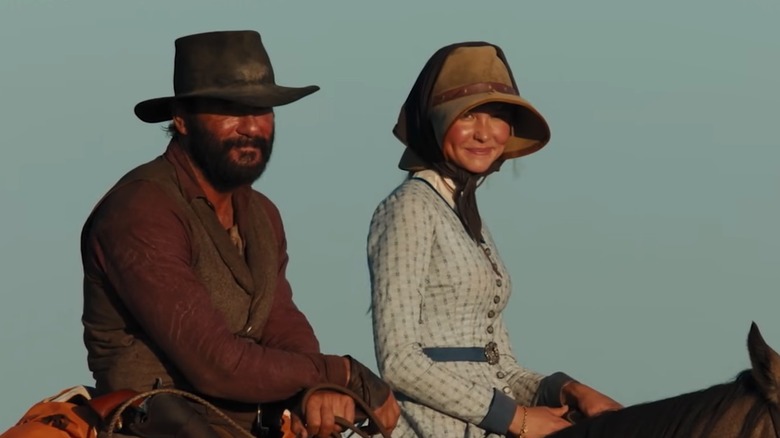
The picture above says it all. James is proud of Elsa. He relies on her. He doesn't flinch when someone he might not have approved of before they left wants to court her. (That character completely defied my expectations. I won't say who it is or how, but you'll know when you see it.) He knows she can ride and shoot, and he believes in her. So does her mother. It's not something you see in period pieces, and it's even rare in modern ones. He knows her worth and so does she.
Those conditions were rough, and not just for men. In fact, the cast had to go to Cowboy Camp . All of them. I'm reminded, as I often am, of the quote from Ginger Rogers where she says she did everything Fred Astaire did, but backwards and in heels. A lot of the rules for women from polite society go out the window when what you're trying to do is survive. Yet women face dangers that the men often don't. I'm sure I don't need to spell that out for you.
A word about Isabel May. She absolutely shines in "1883." Elsa is probably our most modern character in the series. She is absolutely undeterred by the hardships of travel. She breathes in joy with every mile they pass. I think watching that family, and in particular Elsa, is what keeps this from being too dark. Through her eyes, you understand what sort of person settled the West of America, and it comes through authentically. I cannot wait to see what she does next.
A Friendship for the Ages
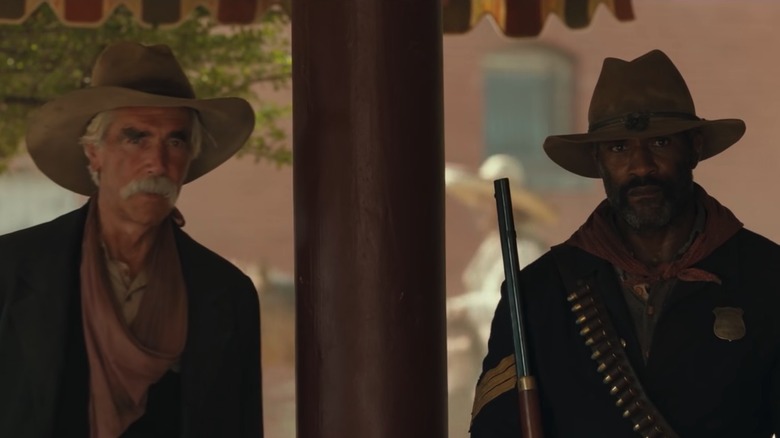
Tim McGraw and Faith Hill are phenomenal here, giving nuanced performances when it would be easy to get away with stock characters. I'm sure Taylor Sheridan's writing and direction were a huge part of that, but they are both a joy to watch. Sam Elliott — do I have to tell you how powerful his performances are? Shea's relationship with Thomas is one of deep understanding, and the ability to know what they other one is thinking. I'm putting a quote in here from my press junket interview with Elliott, because he sums it up better than I ever could:
"Well, number one, it's one of my favorite relationships in the show. I love LaMonica. We've become very close in a very short period of time. Maybe a long period, but it's a short period ... In terms of the backstory, the one common thing, right off the top, that they have is the fact that they're both veterans of the Civil War and what that brings. I think that Thomas's character dealt with that reality a lot better than Shea did. Shea's pretty tormented about it. I think his PTSD is a little more serious, I think, than what Thomas carries. And a lot of that probably ... there's reference to slavery or the treatment that Black people had in those days. Maybe not slavery directly, but there's mention of it, in some of the dialogue that Thomas and I have throughout this thing."
LaMonica Garrett gives a beautifully understated performance as Thomas. This is a character that I'm dying to learn more about. We're only really starting to get stories about Black cowboys, and it's powerful to watch. His interaction with Shea and the kindness he shows to the wagon train, even when he has to be harsh, is intriguing.
'The Road West was Paved with Blood'
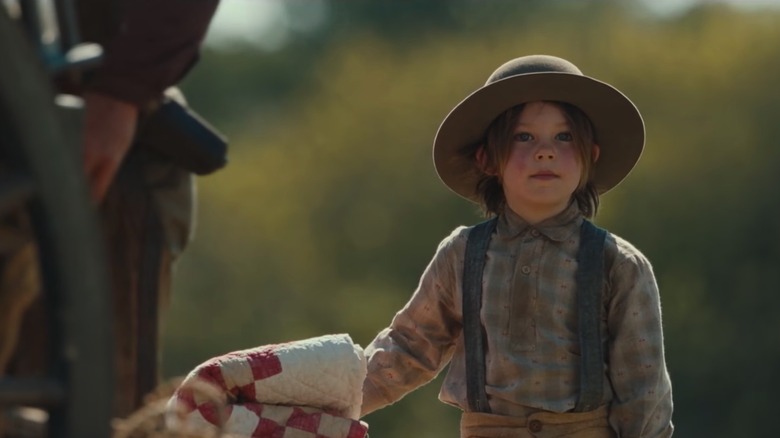
A few things to watch for here include the adorable performance from little Audie Rick, who came to the red carpet in a pinstriped suit and shiny shoes. He's got a great scene in the third episode, and that's all I'll say. Another is the plight of immigrants moving West. This isn't a story I've heard a lot. Most of the immigrant stories from that time period are centered in New York City, or somewhere on the East coast. It's something that should be talked about, particularly these days, as many try to vilify the people who built this country, even though they weren't born here. I do want to warn you that there are a few upsetting moments, particularly in the first and second episodes, so if you're trying to avoid scenes of attempted assault and depression that has reached its zenith, you might want to read a recap before you watch.
That said, I am absolutely blown away by what Taylor Sheridan and his cast and crew have given us here. "1883" is a must-watch.
"1883" premieres Sunday, December 19, 2021 on Paramount+.
- Hunting Trips
- Fishing Trips

Hunting Packages
As fall nears, the colors start to change, and the air turns crisp. This is when we offer backcountry elk hunts and carry out the season to hunting the high-country mule deer.
EARLY RUT-RIFLE & ARCHERY
Unparalleled wilderness elk hunting experience out of our base camp near the head of the Spotted Bear River.
It is a 15-mile ride to get to our base camp. This is some of the most remote, wild country in the lower 48. Our hunting territory runs through the continental divide and borders the Sun River Game Preserve. This country produces some large public land bulls. We have a great advantage in rifle hunting elk while they’re in early rut. The season begins September 15th, this is one of the few places that elk can be rifle hunted this early in the season.
This is a very demanding hunt which requires grit, determination, and strong horses and mules.
Please contact us to be on a wait list for any possible cancellations.
Call Strite at (307)921-1464 or Kaitlyn at (406)471-7631 for dates and pricing.
Click the link below to read a customer’s story.
THE SOMEDAY HUNT Bugle : September/October 2020 (rmef.org)
Published by Bugle Magazine

The South Fork of the Flathead has some of the biggest, mature mule deer in the west.
Because of the rough, unforgiving country, these bucks grow old and live in country that few hunters have the opportunity to access. We rely on our hardy mountain horses to help us gain elevation to great mule deer habitat.
This is an exclusive hunt, and our guides are experts in locating and pursuing these rare trophies.
Call for dates and pricing.
Mountain Lion
Mountain lion hunts utilizing well-t rained Walker Hounds
The Mountain Lion season in Montana starts on December 1st and we hunt based out of our lodge. We typically book 10-day hunts for Mountain Lion because we want to ensure the right snow conditions for a successful hunt. Throughout the hunt – we utilize snowmobiles, horses, and vehicles to find fresh tracks. We have a very experienced houndsman with great hounds.
The success rate on our Mountain Lion hunts is very high.
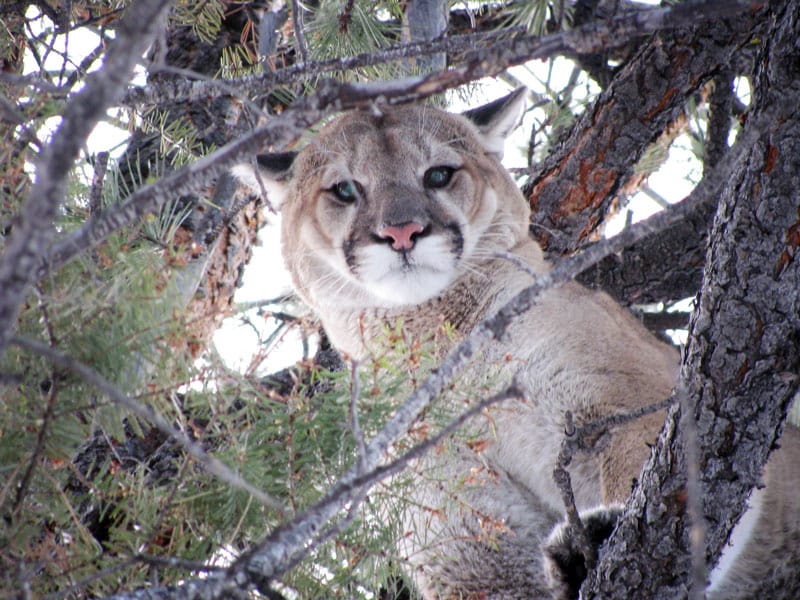
5-day Spring Black Bear Hunts
We hunt Black Bears as they are emerging from their dens in the spring. The bears this time of the year are keyed into the fresh green grass and glacier lilies. We focus on hunting avalanche slides and gated roads.
We have had a very high success rate hunting spring bear. Our area offers all color phases, providing very unique trophies for our clients.
5-day Fall Black Bear Hunts
We book a limited number of fall black bear hunts from September 15th to the end of general rifle season. Contact the lodge for more information on fall black bear hunts.
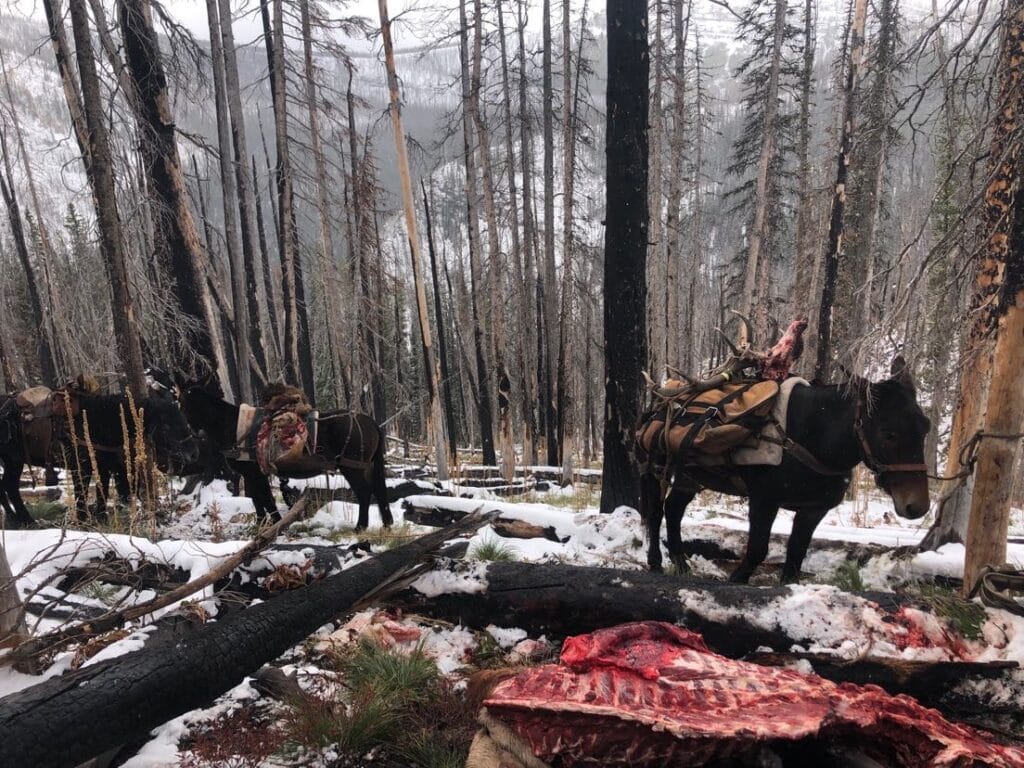
Montana Wilderness Lodge & Outfitting operates under permits issued by the U.S. Forest Service
Oufitter License #59469

Call the Lodge (406) 471-7631 Get Directions
- Book A Trip
Operated by Montana Wilderness Lodge & Outfitting © 2024 | Privacy Policy

IMAGES
VIDEO
COMMENTS
Masterson was in Dodge City, Kansas during 1883 for the Dodge City War, so it is unlikely he was in Montana for this photograph. Harry Britton: Unknown. He very well could have been there. Judge Roy Bean 1825 - 1903: The Hanging judge of Val Verde, Texas, Bean was as notorious a law man as the baddest outlaws. While he was a judge in Texas in ...
"It is worth noting that in 1883, Butch Cassidy and the Sundance Kid were teenagers, not the adults in the photo. Morgan Earp, who is supposedly in the picture, had been murdered in 1882." Supposedly the guys depicted in the photo were local residents—some of whom bore a slight resemblance to the men.
Teddy Roosevelt did retreat into the western wilderness in 1883 after the death of his first wife and when Butch Cassidy, Wyatt Earp, Doc Holliday and Bat Masterson were all dotted somewhere around America's ragged and dangerous western frontier. The story goes that the men were brought together to celebrate the opening of new railroad track ...
Even from his childhood, hunting was never at odds with preservation. So it's not surprising that his very first trip west in 1883 at age 25, a year before he rode out to establish his ranch, was in pursuit of one of the vanishing bison in the Montana-Dakota border country.
Montana is within the natural range of buffalo, and by 1883 was one of the many places where it became clear industrial-scale hunting was one of the causes of the animals' near extinction (via All About Bison). This snowballed into negatively affecting both the ecosystem and the lifestyles of local tribes, who to this day are working to restore ...
Hunting camp with carcasses of 19 deer and sheep hanging circa 1883. ... Four men, one holding a rifle, in Hamilton, Montana, with the results of a hunting trip piled on their automobile. The ...
Hunter's Hot Springs
Josef starts building his new house alone since his wife Risa died upon arrival. Shea sits on a beach looking out at the Pacific Ocean, fulfilling a promise to his wife before he takes his own ...
We suggest starting with Hunting Trips of a Ranchman or Ranch Life and the Hunting Trail to understand this phase in his life. Finding solace Roosevelt made his way to the Dakota Territory and the badlands of Montana in 1883. A year later, reeling from the death of his wife and his mother on the same day, Roosevelt returned to the region that ...
Springs, Montana — 1883. If the names are to be believed, the image is the largest assemblage of Old West celebrities ever pictured in one group. ... 1886 Theodore Roosevelt was on a hunting trip in Montana ; Butch Cassidy and the Sundance Kid were in fact working within a day's ride of Hunter's Hot Springs; and "Liver Eating ...
The Duttons Route in 1883: From Tennessee to Texas to Montana. Originally, James, Margaret, Elsa, and John were from Tennessee. However, they experienced a life of poverty which led them to flee their home in Tennessee for a fresh start. The Dutton family then traveled to Fort Worth, Texas, to begin their journey to a new life.
Duttons' Route, Mapped. In the first episode of '1883,' James Dillard Dutton arrives in Fort Worth, Texas. His family later joins him in the town, where they have a harrowing experience that will be the first of many in the days to come. James wishes to move his family away from Texas's impoverished and outlaw streets.
Filmed in Fort Worth, Texas, "1883" boasts a star-studded cast, including actors Sam Elliott, Billy Bob Thornton, and country music superstars (plus real-life married couple) Tim McGraw and Faith Hill. Eric Nelsen, who plays a young cowboy named Ennis, also stars. The actor—who, in a stroke of kismet, moved to Fort Worth months before he was ...
Vintage Wall Decor The Gathering 1883, Rare Old West Photo Print, Holliday Earp Butch Cassidy Unique HISTORIC Collectible Includes Write Up ... Montana in the year 1883. The group pictured was believed to be on a hunting trip at the time, and gathered on the steps of the railroad depot to have this picture made.
Swan Mountain Outfitters operates our hunting trips under permits from the U.S. Forest Service and State of Montana DNRC. We operate on public land. All hunts are conducted under the Outfitter's License (#34041) of Patrick Tabor. * *Swan Mountain Outfitters offers Moose and Mountain Goat backcountry hunts in Hunting Districts #130 and #150.
54.9K Likes, 977 Comments. TikTok video from Junk N' Gab (@junkngab): "I found the most epic picture of all time at a restaurant in Sun Valley, ID! This is pic of a hunting trip in 1883 in Montana of some incredibly famous folk. Check it out! #wyattearp #teddyroosevelt #butchcassidy #sundancekid #hunting #vintagefinds #antiquing #vintage # ...
Montana Guided Elk Hunts
1883 brought us the origin story of the Dutton family and their Montana cattle ranch.The now powerful Dutton family came from humble beginnings, leaving behind a life of poverty in Tennessee. 1883 was filled with hardships, heartbreaks, suffering, and adventure.The series painted the harsh realities pioneers faced on their journey out West.
Montana Guided Whitetail Deer Hunting
This article was originally published on Dec. 29, 2021. The Western drama 'Yellowstone' and its spinoff, '1883,' were filmed in idyllic locations in Texas, Montana, and Utah. Some, like Dutton ...
This is a rough land, and "1883" really makes that clear. From having the group inspected naked for smallpox, to an attempted assault, to bandits and sudden deaths, a journey like this can break ...
This is a very demanding hunt which requires grit, determination, and strong horses and mules. Please contact us to be on a wait list for any possible cancellations. Call Strite at (307)921-1464 or Kaitlyn at (406)471-7631 for dates and pricing. Click the link below to read a customer's story.
41 hunting trips from 8 outfitters starting from $ 2,500 . 41 hunts $ 2,500 starting from. 9 animals. 1485 mi to the nearest ... in the world come from Montana, especially the Missouri Breaks region; however, drawing odds are extremely low. Hunting in Montana is conducted on both public and private land, and permission is required to hunt on ...